Choosing the best van for a camper conversion can be a difficult decision. But fear not; we’re here to help! We’re sharing the best vans to convert into a campervan along with their specs, the pros and cons, as well as some insider tips and things to consider when buying a van for a camper conversion.
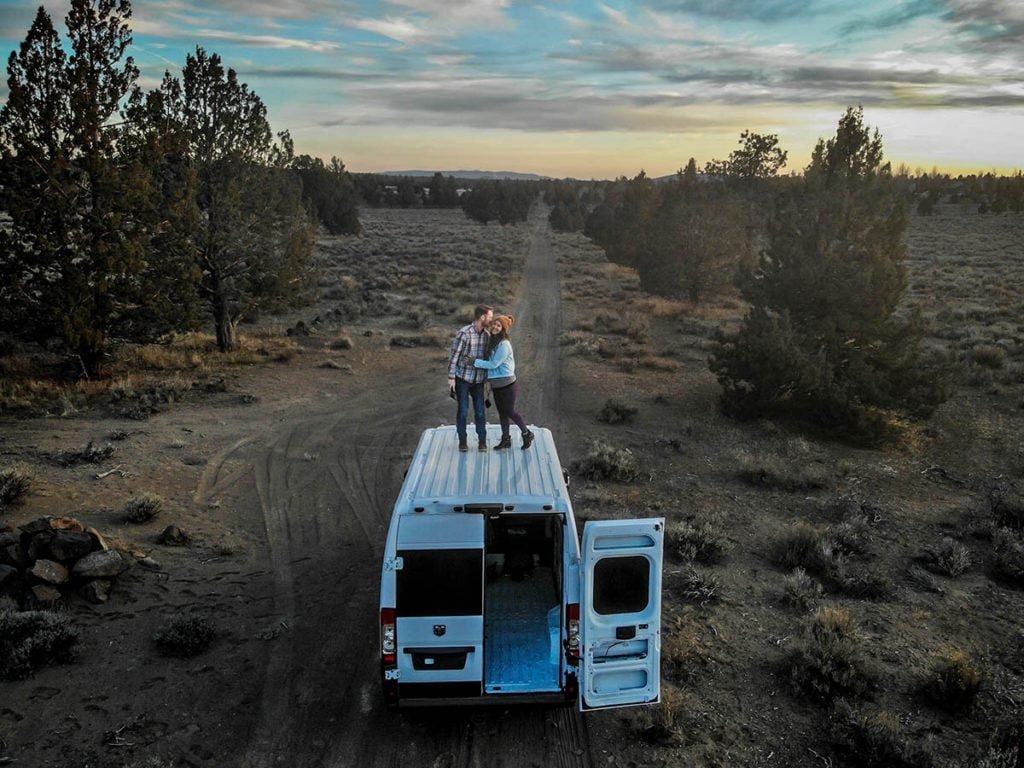
It might sound obvious, but the first big decision you’re going to need to make on your #vanlife journey is choosing a van. Duh.
One of the most common questions we’ve been asked is, “What is the best van for a camper conversion?”
And like pretty much every other decision in your van build journey, there’s no correct one-size-fits-all answer. It’s a very personal decision and essentially comes down to your priorities and budget.
There are a lot of things to consider when deciding which van to go with, and the best van for us might not be the best van for you.
But don’t worry, we’re not going to leave you hanging to figure it all on your own from square one… In this article, we’re going over the best vans for camper conversion, along with things you’ll want to consider as you make this (very important!) decision.
Why trust us? We’ve built out three (very different) campervans on our own, and we’re sharing the many things we’ve learned along the way.
Even if you already have a van in mind, it might be a good idea to go through this checklist to make sure it’s the best model for you.
Best Vans for Camper Conversion Article contents
We’ve broken this article into sections, so feel free to jump around to get to what you’re looking for.
Quick answer: Our choice for the best van for a camper conversion
Before Buying:
Popular Models:
- Dodge Ram ProMaster
- Mercedes Sprinter
- Ford Transit
- Ford Econoline
- Nissan NV Cargo
- VW Bus
- VW Crafter
- Chevy G20
- Fiat Ducato
- Toyota Hiace
→ Psst! Save yourself hours of research and headaches and jump straight down to our DIY campervan conversion guide!
Quick answer: Our choice for the best van for a camper conversion
If you’re looking for a quick answer, we’d highly encourage you to at least skim this article to understand all of the different things to consider when choosing a van for conversion. This choice is highly subjective and the best van for a camper conversion may vary from person to person.
After weighing all of our personal preferences, we chose to do our second and third (current) campervan conversions with a Dodge Ram Promaster.
Our main reasons for choosing a ProMaster is that it is similar in size and functionality as the Mercedes Benz Sprinter van, but it has a lower price-point.
Things to consider before choosing your van
As you’re making the decision about which types of vans to look for, here are all the things you’ll want to consider.
(You can click the links below to jump around to each section, or you can simply continue reading to go over them all.)
- Budget
- Size
- Height
- Maintenance
- Mileage
- Safety & security
- Appearance
- Diesel vs. gas
- Front Wheel vs. Rear Wheel vs. All Wheel Drive
- Windows
- Pre-built or DIY
- Van alternatives
Budget
We want to start this section off by saying you can absolutely do a campervan conversion on just about any budget. We are proof that you don’t need tens of thousands of dollars saved up before you can start.
Check out our two very different builds in the photos below.
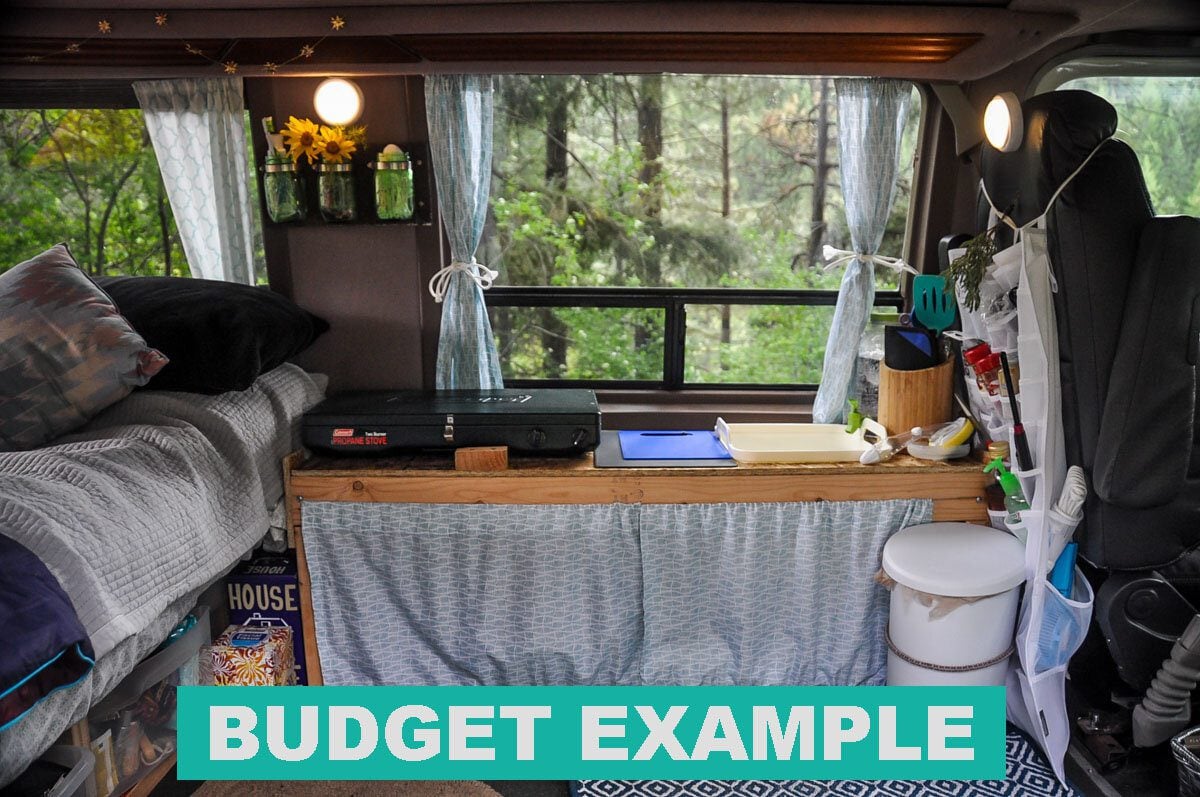
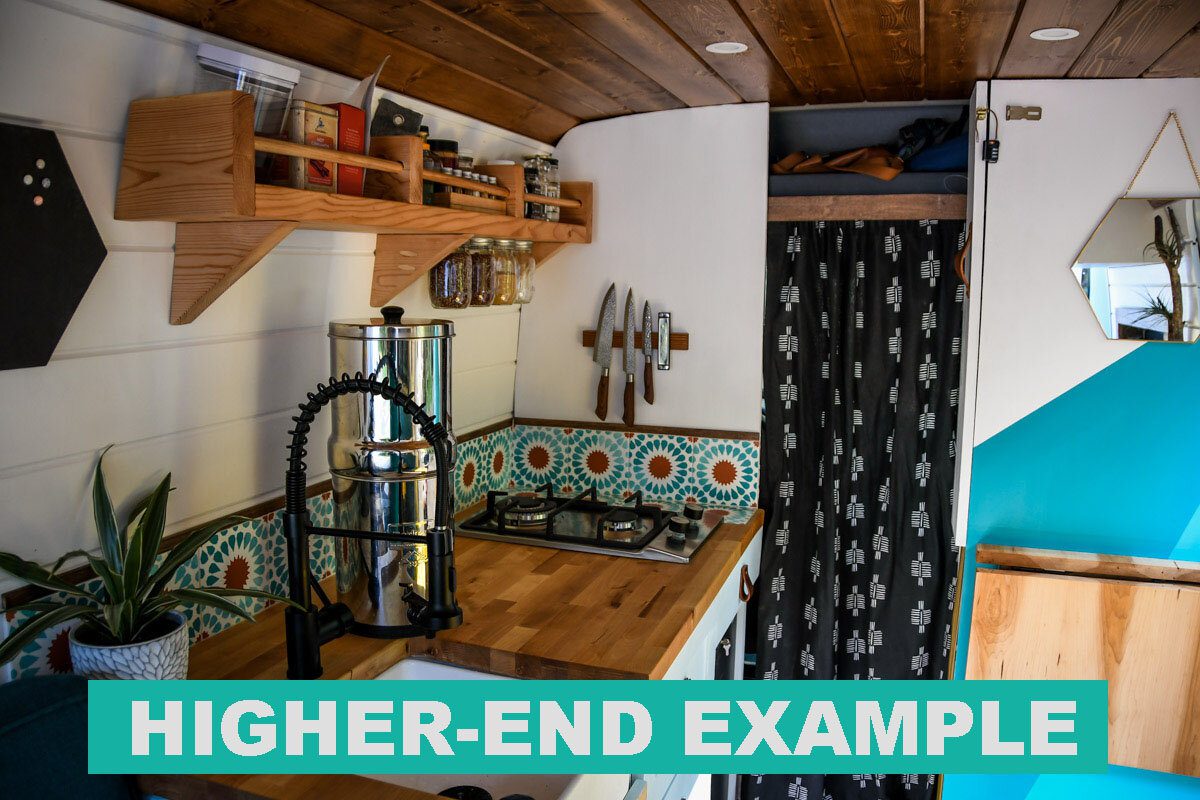
Create your personal budget
You’ll want to come up with a number that you feel comfortable with before you start looking for a van to purchase.
Be sure to think about it in terms of total cost for your entire conversion. The cost of buying the van itself is just one part of turning it into a home.
We’ve come up with a general rule of thumb that seems to make a lot of sense when determining your van build budget.
Total Budget = ⅓ conversion cost + ⅔ vehicle cost
You should expect to spend about two-thirds of your total budget on the vehicle, and around one-third on the conversion costs.
Our reasoning for this is that unless you find an incredible deal on a vehicle, you more or less get what you pay for. A cheap van might only run for a few more years, so why pump a ton of money into it?
Here are two examples of what we mean:
- It wouldn’t make much sense to spend $5,000 on a cheap van, then put $20,000 into the conversion costs. Your conversion is only going to last as long as your vehicle runs… know what I mean?
- And on the other hand, it would be kind of strange to spend $35,000 on a brand new Sprinter and then only have $2,000 to turn it into a home. It’s going to be a super nice vehicle but a pretty basic conversion.
The two-thirds to one-third ratio isn’t by any means scientific or something you have to stick to completely. But it is a good formula to use as you start thinking about your budget in a holistic way and to be smart about where your money is going.
→ Related: Find out just how much a campervan actually costs, from budget to luxury builds with our detailed breakdown.
Our personal experience
- Small Budget: Our first campervan conversion was done on a TINY budget. We were absolutely broke, so the total we could spend on the vehicle AND the conversion was $3,000. We lucked out and found a van for $2,000, and we spent just over $900 on the conversion costs. It can be done, friends!
- Medium Budget: For our second conversion, we had a bit more money to work with, but we still tried our best to follow the ⅔ to ⅓ rule. We purchased a van for $20,000, and got all our conversion expenses to be right around $10,000 total.
- Large Budget: For our third build, we went to a dealership and bought a brand new vehicle for $55,000 and completed our conversion for about $20,000. It was our most complex build, with installing a beefy electrical system, an indoor recirculating shower, and a bench seat for our daughter.
If $20,000 is your absolute maximum you can spend in total, you probably don’t want to spend much more than $13,000 on the vehicle itself. That way you give yourself some wiggle room in the budget for unexpected costs that may come up in the conversion process.
To give you an idea of typical price points, we’re sharing the current buy new MSRP costs (Manufacturer Suggested Retail Price) for the base models of each of the vans we’re suggesting below.
Look at Kelley Blue Book
Kelley Blue Book is always a good site to check before purchasing a used vehicle, however, during our search we found that oftentimes dealers were actually selling for a bit more than the suggested KBB price because the demand for these types of vehicles is on the rise.
With this in mind, when we saw a vehicle listed for lower than the KBB suggested price, we knew that it was a good deal and we jumped on it right away (aka the same day the listing appeared on Craigslist!).
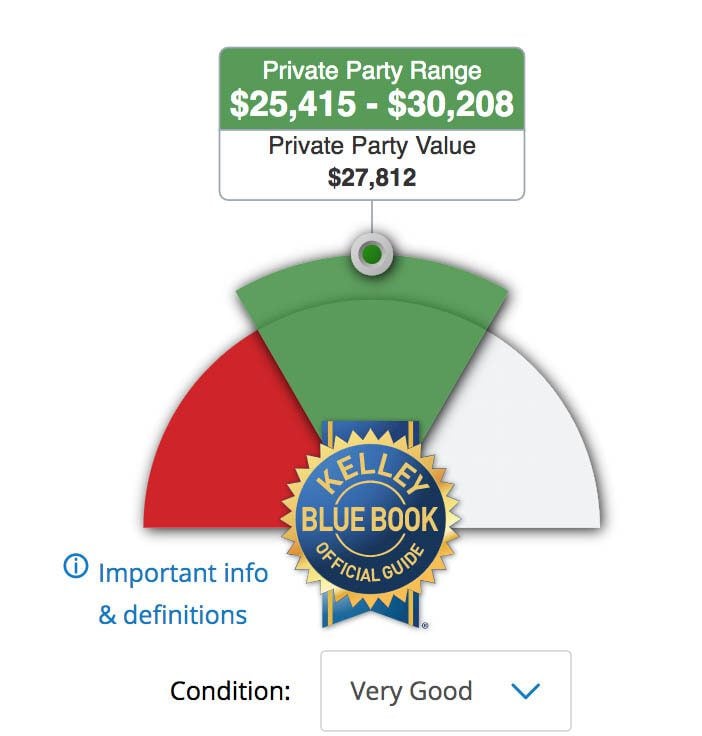
As an example, the screenshot above is the KBB recommended price range for the vehicle we purchased. It was listed for $20,000, which is a bit cheaper than the Kelley Blue Book price, so we jumped in the car and drove out for a test drive because we knew this vehicle wouldn’t be on the market for long.
Now that you have a pretty good budget in mind for how much you want to spend on the vehicle alone, there are quite a few other factors to consider…
Size
Now you need to think about the size of your vehicle… A lot of makes have several models, and in order to choose you need to consider a few things:
Are you going to be living in the van full-time or using it for shorter road trips?
The answer to this question can play a huge role in your budget and the size of vehicle you need.
If your campervan will be your house essentially, you’ll probably want a bit more space and have more money to spend than someone who is only looking to take it on an occasional getaway.
Do you have any hobbies that require a lot of storage?
Do you plan to carry mountain bikes? Climbing equipment? Backcountry camping gear? A surf board, SUP or kayak? What about skis or snowboards?
Adventure gear is the perfect addition to vanlife, but the trade-off is you’ll need to allocate quite a bit of space for storage.
The best layout for traveling with lots of gear is likely going to be creating a “garage” or storage space under a fixed bed that is accessed from the back of the vehicle. (See photo below)
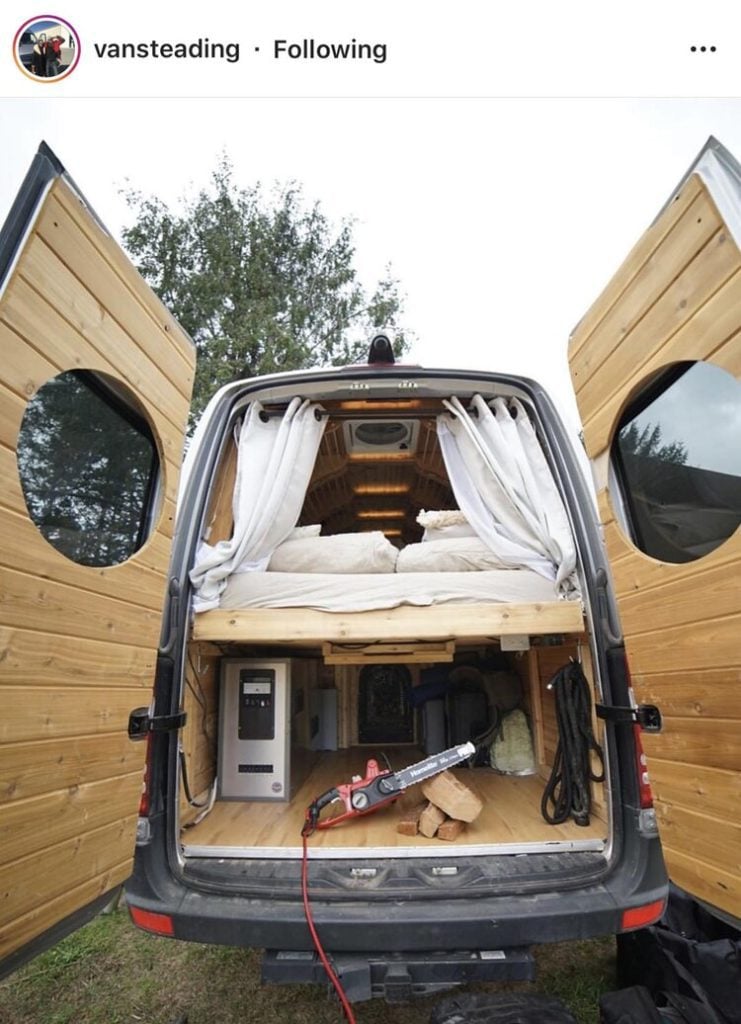
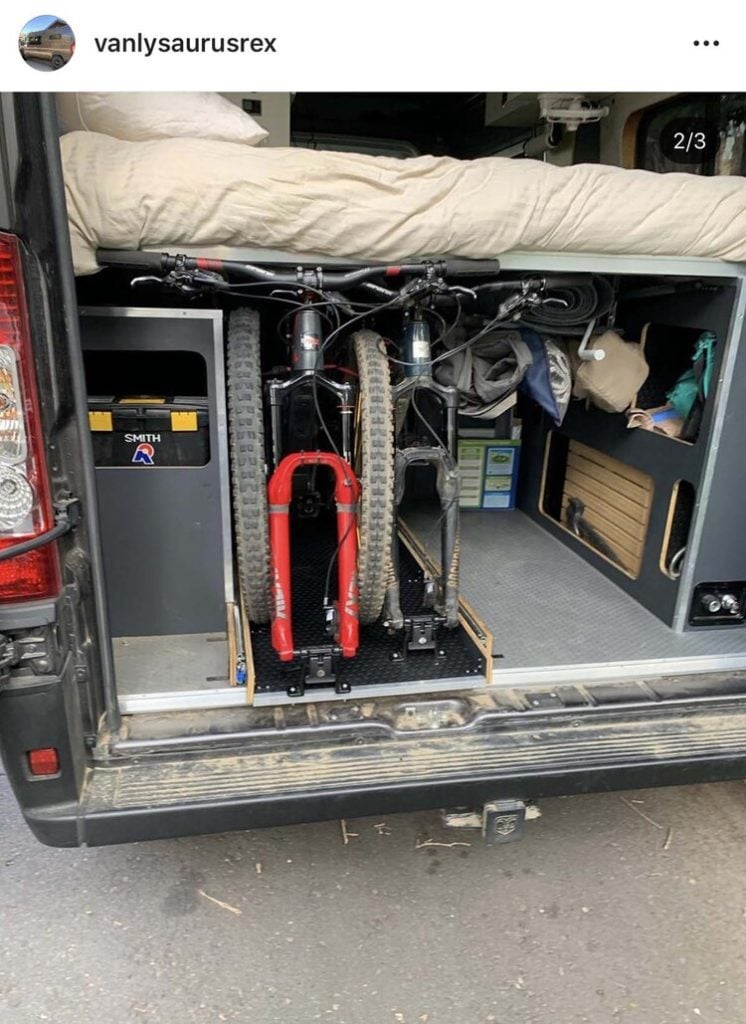
This layout (with a fixed bed) requires a bit more square footage than a non-fixed bed, so keep that in mind if you have a lot of gear you’ll be carrying with you. We went over all the different options in detail in our campervan beds article.
Insider Tip: We try not to carry any large equipment with us that we don’t use at least once a week. It just doesn’t make sense in the long run for us to carry our (large) SUPs if we only use them once a month.
Do you need a private bathroom / shower?
We’re going over the whole bathroom convo in detail in an article all about campervan toilets, but know this… if you absolutely must have a private bathroom and/or shower area, you will need a larger vehicle than someone who is okay with a more “rustic” solution.
Need help deciding? Check out our detailed bathroom pros/cons discussion!
Do you mind driving large vehicles?
If driving a vehicle larger than an SUV scares you, be sure you don’t just push away those feelings. Yes, you will get used to driving a larger van, but you also want to buy a van that doesn’t make your skin crawl at the prospect of merging on the highway.
You know yourself and whether you can learn to love it or whether it’s always going to feel uncomfortable. If you’re not psyched about driving something huge, go for a smaller model of van (there are plenty to choose from).
How many people (and furry friends) will be in this vehicle at a time?
Pretty straightforward… If you’re traveling solo, you’ll need a lot less space than a family of 4 with dogs.
Psst! Vanlife with pets is totally doable! We talked to the experts who gave us the rundown on what living in a van with a dog or cat is really like.
Wheelbase
Huh? What’s the wheelbase, you ask?
- Wheelbase: The distance between the front set of wheels and the back set of wheels.
- What this means: The longer the wheelbase, the larger “living space” you’ll have.
Our personal experience:
Our second vehicle was a Dodge ProMaster 2500 with the shorter wheelbase, 136” WB. The standard 2500 has a wheelbase of 159” WB. We were originally looking for the standard (159”) van, but found a great deal on the shorter version. Here’s our feelings about it:
- The negatives of this is that we had about 2 feet less space to work with as we were building. And you’ll soon realize that 2 foot is quite a bit to lose.
- The positive thing about a smaller wheelbase is that it feels more like driving a minivan than a huge cargo van. Plus, we can fit into regular parking spaces without sticking out.
We were actually really happy we had the shorter wheelbase after our second van was built out. It was the perfect size for just the two of us.
However, when we found out we were expecting a baby, we knew we needed more space in our van. So for our third van build, we purchased the Ram ProMaster 3500 extended version (with the 159” WB). Because it was the extended version, it gave us 4 more feet on the inside to work with.
These 4 extra feet (more or less) became dedicated to our daughter’s bench seat, crib, and cabinets for her supplies.
Height: High-top roof or standard roof?
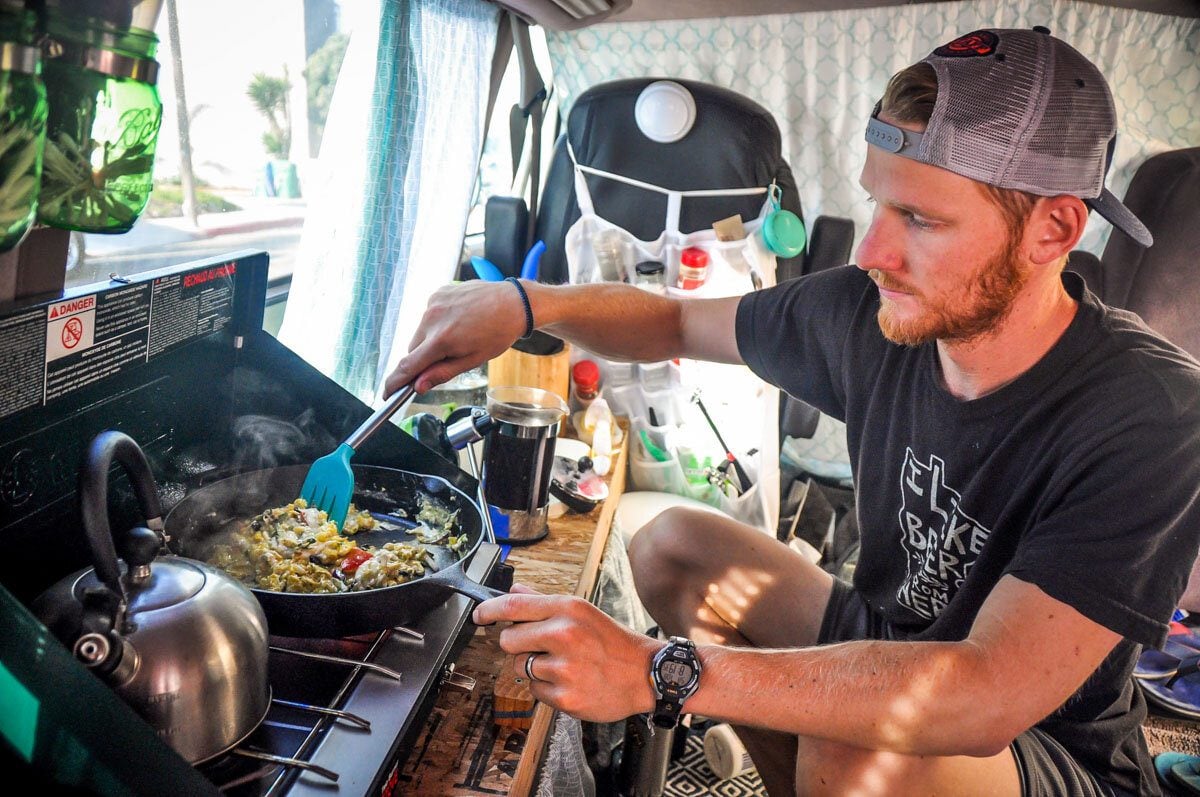
Here’s a biggie… Is it a must to have a high roof? (Aka one where you can stand up completely inside your van?)
A vehicle with a high roof is most likely going to cost more than the traditional low-roof.
Our experience…
For our first conversion, we had a tiny budget ($2,000 to spend on the van). So we really had no choice about the height of our roof. Our vehicle had a low roof, and we were not able to stand up straight inside.
And you know what? We got used to it. We cooked while sitting down and we learned how to change our clothes while laying on the bed (an acquired skill indeed!). It wasn’t ideal, but we lived in that van for 3 months and could have stayed in it longer.
That said, we always talked about how our second conversion would definitely have a high roof. It became a “must” on our list when searching for a vehicle.
For both our second and 3rd campervan conversions, we purchased vehicles with a high roof and were very happy with our decision as it made living in our van more comfortable for the long term.
Takeaway
If you’re planning on living in your van full-time your answer may differ from someone who will only be using their rig on short trips.
If you’re on a really tight budget and think you can get used to a low roof, you can probably save some money when choosing a vehicle. However, if comfort is important in your build, you’re probably going to want to choose a van with a high roof and may need to allocate a bit more money to your budget to make this happen.
Tall friends…
If you’re taller than 6 feet, you might need to look for some specific vehicles. Ben is 6’1”, and our Dodge Ram ProMaster is just tall enough. Anyone taller than Ben would have a hard time standing straight up inside once the floors and ceilings are installed.
If you’re tall, we’d suggest looking into a Ford Transit, as it is the tallest cargo vehicle on the market and will be your best bet for a comfortable height. That said, you will need to be a bit more mindful when driving in parking garages and any areas with height restrictions.
Alternatively: If you find a van that you love, it is possible to install an aftermarket high roof, but it does come at a cost (and it looks like a pain to install). We wouldn’t recommend going this route unless you get a great deal on the vehicle.
Ongoing maintenance
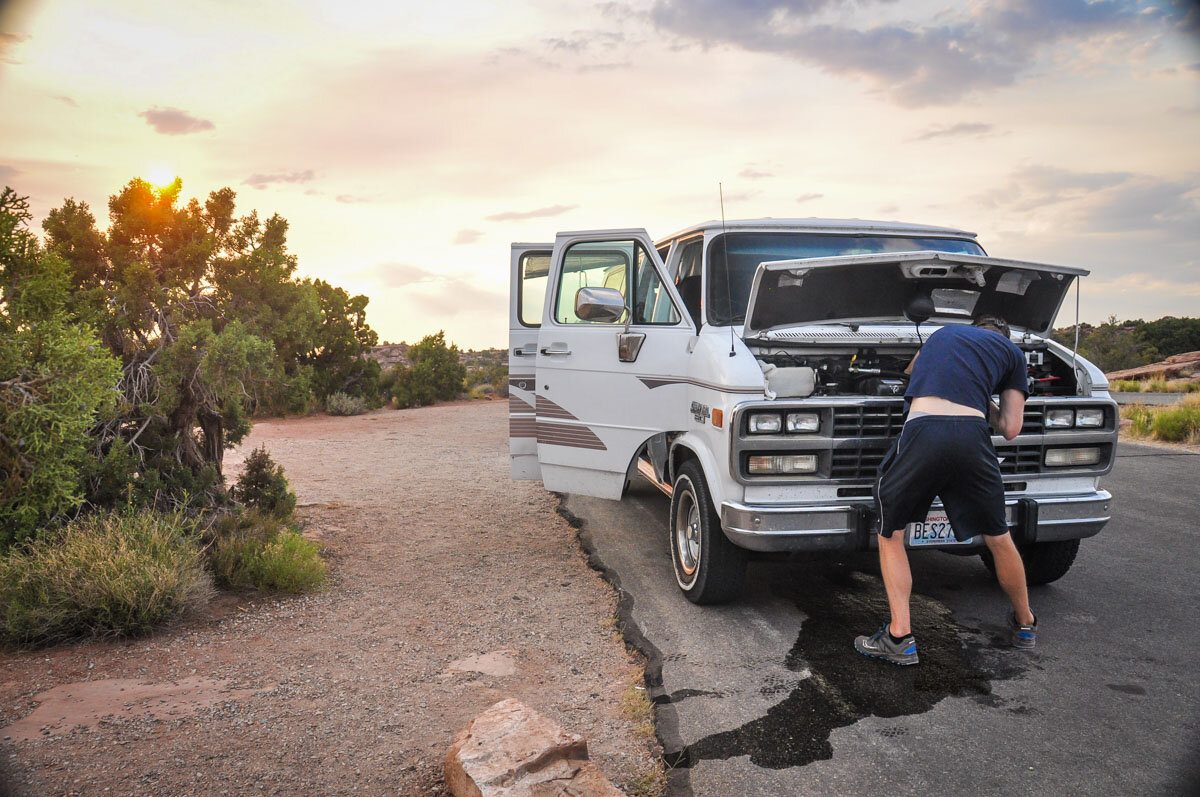
When you’re choosing the type of van you’ll buy, think about where you’ll need to take it if and when you need work done. For example, a Dodge or Ford van will be able to be fixed at pretty much any auto shop, whereas a Mercedes (or Volkswagen) needs to go to a specialized mechanic.
We talked to a guy who had a Mercedes Sprinter and overall he really loved the space. However, he said it is a pain to get any work done on it. Not only is it more difficult to find a mechanic, but it often costs more as well.
Volkswagen vehicles are another make that require more specialized service. You don’t necessarily need to go to a VW dealership to get work done, but you need to find a mechanic that specializes in Volkswagens.
Just one more thing to think about as you make this big purchasing decision.
Mileage
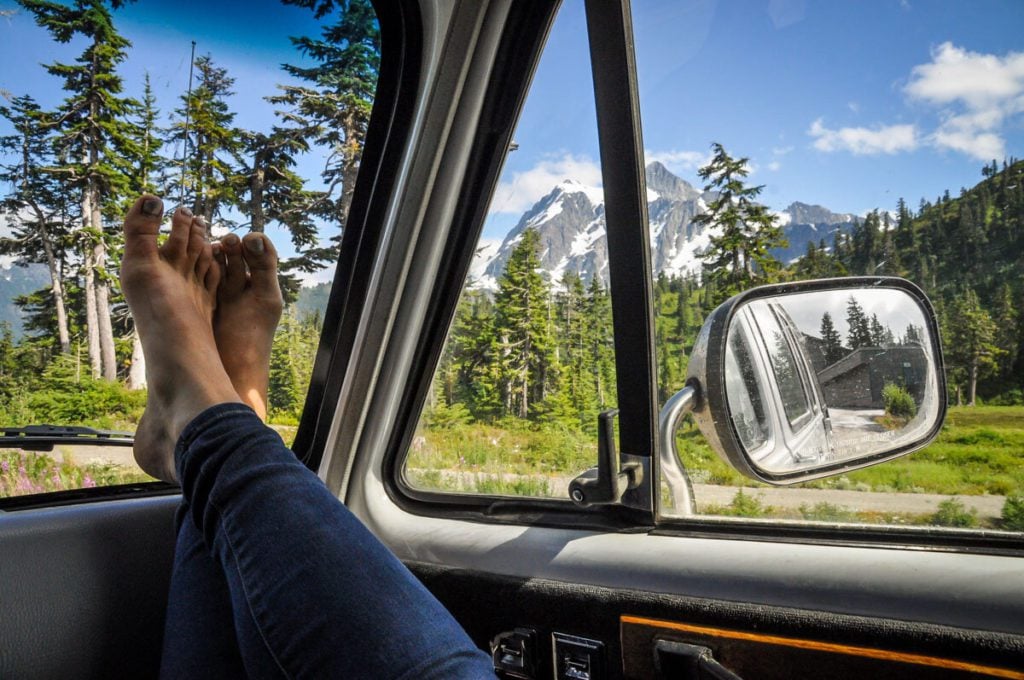
You probably already know whether you’re looking for a new or used vehicle. And obviously if you go with new, you don’t have to worry about the milage on the van. So you can skip this consideration and keep on reading!
However, if you’re only looking at used vehicles (hello, us too!), it might be a good idea to have a certain number of miles you’re hoping to stay under. Think about your budget, how long you plan to keep this van, whether or not you plan on selling it in the future, and what type of trips you’ll be taking it on (weekend getaways vs. cross-country road trips).
If you’re planning to really deck out your conversion, you don’t want to put in all that time and effort (and money!) when the van has nearly 300,000 miles.
For our build, we were looking for a van with less than 100,000 miles. And lemme tell ya, it was tricky to find. But when we found one that had less than 30,000 miles and was just a little more expensive than the others we were looking at (with 3x the miles), we knew we had to jump on it.
Having a mileage in mind (just like your budget) will help you choose the best van for your conversion. That way you won’t be lured in by a seemingly great price when the vehicle won’t actually run very long.
Insider Tip: If you’ve determined the make and model of the vehicle you’re looking for, do a bit of research to see how long the engines typically last. Some cargo vehicles on the market actually keep truckin’ well into the 300k or even 400k while others aren’t known for longevity.
Safety
Another aspect to think about with this big purchase is the safety of the vehicle itself. When purchasing a newer model, you’ll likely have some safety features that weren’t available 10 years ago. If you are traveling with kids or just want that extra layer of confidence on the road, you may want to consider looking for newer vehicle.s
Insider Tip: Search [your make & model] + year + “recall”, and see if there are any safety concerns. If there has been a recall, ensure that the previous owner has had it taken care of (there should be paper documentation for this, or you can check with the VIN number). If it needs to be fixed, it is typically free at your local dealership. Call and make an appointment or see who serious the recall is. Our vehicle had a very minor recall, so we just called to have it taken care of.
Appearance
Sure there’s the obvious: the color, the look, cosmetic issues like dents or rust… If these things are important to you, make sure you look closely at pictures before going to test drive.
Good to know: We found that in the used vehicle market, there are many more white cargo vans available than other colors. Ideally, we would have chosen a different color (think slate grey or dusty blue!), but unless we were willing to wait around or purchase new, it just didn’t seem like it was going to happen. You can always “upgrade” your van and paint it aftermarket (though you’ll want to allocate funds for that job).
However, as important as it is to like the look of your van, there is something to be said about the level of stealth a “clunker” can provide. If your van is super rigged up and looks amazing from the outside, it can say a lot about what valuables you might have on the inside. And not to be a bummer, but break-ins are not uncommon, especially if it’s clear you’ve got a sweet conversion.
Moral of the story: This isn’t to say you should try to choose an ugly van, but it’s just something to think about. You can always install a alarm system if it makes you feel more comfortable. And if you do end up finding a van that is perfect for your needs but isn’t the most studly, that might not be such a bad thing, would it?
Quick note on “Stealth” Camping
Having a vehicle that is stealth is something that is often discussed in van build Facebook groups, and people have varying opinions about what it is exactly and how important it is.
Having a rig that is completely stealth (or not super obvious that someone may be sleeping inside) is truthfully kind of difficult these days, as vanlife is an ever-growing trend.
I mean, while we have a cargo van with no windows on an entire side, it’s not exactly a secret that it’s a campervan. Once you add a fan, solar panels and a bike rack, you’re not really fooling anybody about the purpose of your vehicle.
The truly best types of “stealth” vans are those that could just be a passenger vehicle, making minivan or Subaru conversions a good choice if this is a priority to you.
That said, it often doesn’t take much more than glancing curtains on the windows to know that someone very well could be inside.
Why is stealth camping important?
The whole point of being stealth is to not draw attention to yourself, especially when parking in a city. This can make it more comfortable to park on a residential street, as some people won’t be very happy seeing a campervan outside their window.
I would encourage you to think about the following:
Do you plan to park in city limits often, or do you envision spending most of your time in the wilderness?
We can tell you from experience that if you plan to do some urban camping, a smaller vehicle – specifically, one that can fit into a normal parking space – will be very nice. It’s hard to be discreet when your rig is gigantic and takes up two parking spots. That said, being totally stealth (not having external features like solar panels and a fan) can make it difficult to create a really comfortable space. So I guess our advice is not to worry about the whole “stealth” thing too much other than being able to fit into regular parking spots.
Interesting idea… If you’re really concerned about making sure your vehicle doesn’t look like a campervan, we’ve heard of some people who created a sticker with the logo of a fake company (think pest control or cleaning… something that people wouldn’t want to break into for expensive tools). This way, they feel like they can park overnight in residential areas without people noticing. This isn’t really our jam, but like we said, interesting idea…
Diesel vs. Gas
There are a few things you’ll need to consider when buying a van with a diesel engine. Typically diesel vans will cost a bit more upfront, but they are more fuel efficient so in the long run you could be saving more money. However, not all gas stations carry diesel so you may need to search harder when you need to fill up.
There’s a few more pros and cons for diesel engines like:
- better torque and towing, but lower top speeds
- slightly better for the environment, but still pollutes
- higher resale value, but diesel mechanics are typically more expensive
- and the list goes on..
Bottom line: If you find a diesel powered van that is exactly what you are looking for, I wouldn’t let it scare you away for pursuing it. However, in our opinion, we lean toward gas engines because a familiarity and accessibility.
Alternatively, if your budget allows, you may want to consider an electric camper van.
Front Wheel vs. Rear Wheel vs. All Wheel Drive
The way my dad explained it to me once was a Front Wheel Drive (FWD) “pulls” a vehicle and a Rear Wheel Drive (RWD) “pushes” a vehicle. When you are looking for vans, I would not look at RWD vans because FWD vehicles make it a lot easier to pull your van out of snow, dirt or rocks rather than “push” it. Luckily, our list only includes FWD, All Wheel Drive (AWD) vans.
The Ram ProMaster only comes in FWD, while the Ford Transit and the Mercedes Sprinter both have options for AWD which is better for off-roading and driving on bumpy forest roads. However, it does come at a higher price tag.
Bottom line: If you have the option to and are willing to pay for it, AWD vans are the best for climbing mountain roads and handling in snow, but it will cost you a bit more.
Windows
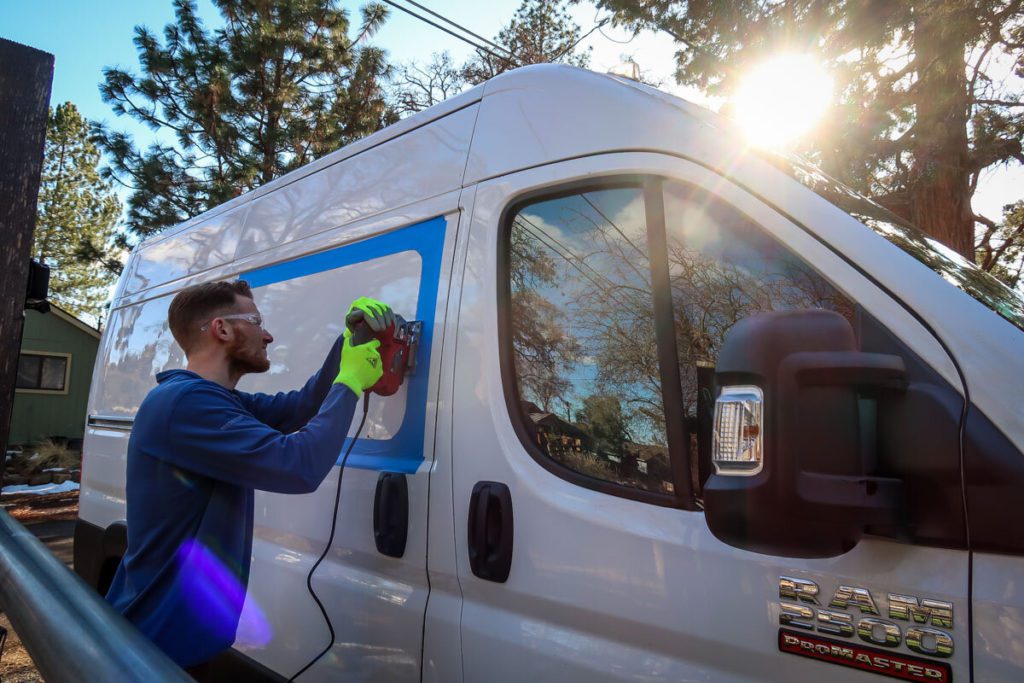
One thing that might slip your mind as you’re looking for vehicles is your feeling on windows. Now, this factor shouldn’t necessarily be a make or break if you find a van at a good price, but it is something you’ll want to keep in mind (especially if you’re trying to choose between two vehicles).
Consider how many windows you ideally want to have.
- The good: Windows bring in lots of natural light & can provide nice views. Also, having windows on the back door and sliding door can make driving easier, as you can see out of them.
- The bad: Having many windows can make it hard to control the temperature inside the van and will cause it to heat up in the summertime and become very cold in the winter. Additionally, windows allow people to look inside and will minimize your privacy. Make sure you insulate your van properly by following these steps.
Good to know: It’s actually pretty easy to install windows. That said, it isn’t exactly a cheap project. It is more difficult to “remove” windows, and the process would be more along the lines covering them up with a wall and insulation (so you’d still be able to see them on the outside of the vehicle). For each window, you’ll likely want to buy or make window coverings to keep light (and peeping eyes!) out.
Our personal experience
- Our first van was a regular passenger van and had several windows: two on either side of the van and one on each back door. We created curtains for each of the 6 windows (for privacy), but it made the van pretty hot during the summer months.
- Our second van came with rear windows only. We decided we wanted a window on the sliding door for some natural light as well as a bunk window by our bed that we could open for a little light and air circulation. We installed both of those windows ourselves. When debating between that van and another one that we had test driven with zero windows, one of the determining factors was that we would have fewer windows to install. So thinking about the windows definitely helped in our decision-making process!
- Our third van did not have any windows in the cargo area so we installed 4 total new windows (two in the rear, one on the sliding door and one bunk window). Both the bunk and the sliding door windows can open for more ventilation which we thought was a good upgrade from our second van.
Pre-built or DIY Campervan
Read through the different options and determine which one is for you. Knowing what you’re looking for is going to be essential when searching for vehicles.
Do you want to purchase a van that has already been converted by the previous owner?
- pros: you won’t have to do the work yourself, it’ll be ready to go adventuring as soon as you have the keys
- cons: you won’t be able to fully customize the van, if it was a DIY build, you’ll have to trust that the previous owner knew what they were doing
Do you want to purchase a van and then have a builder do the full conversion for you? Or a partial conversion?
- pros: the process will likely go more quickly than it would on your own, professional quality, you don’t have to spend your own time on the build
- cons: more expensive, sometimes it can be difficult to make it super customized if someone else is building it
Do you want to do the conversion entirely on your own?
- pros: save money, make it exactly how you want it, learn, feeling of pride converting your own van
- cons: time consuming, some projects can be difficult for beginners
If you’re choosing to do some or all of the conversion yourself, we’ve got lots of handy DIY tutorials to help!
- Campervan Layouts: How to Design Your Dream Van Build
- Campervan Insulation Guide
- Campervan Kitchen Ideas
- Best Campervan Toilets (for all budgets!)
- Campervan Bed Designs
- Campervan Storage Solutions
- DIY Campervan Curtains vs. Insulated Window Covers
- Our Complete DIY Budget Campervan Guide
- DIY Campervan Bed Frame on a budget!
- DIY Campervan Kitchen on a budget!
Van alternatives
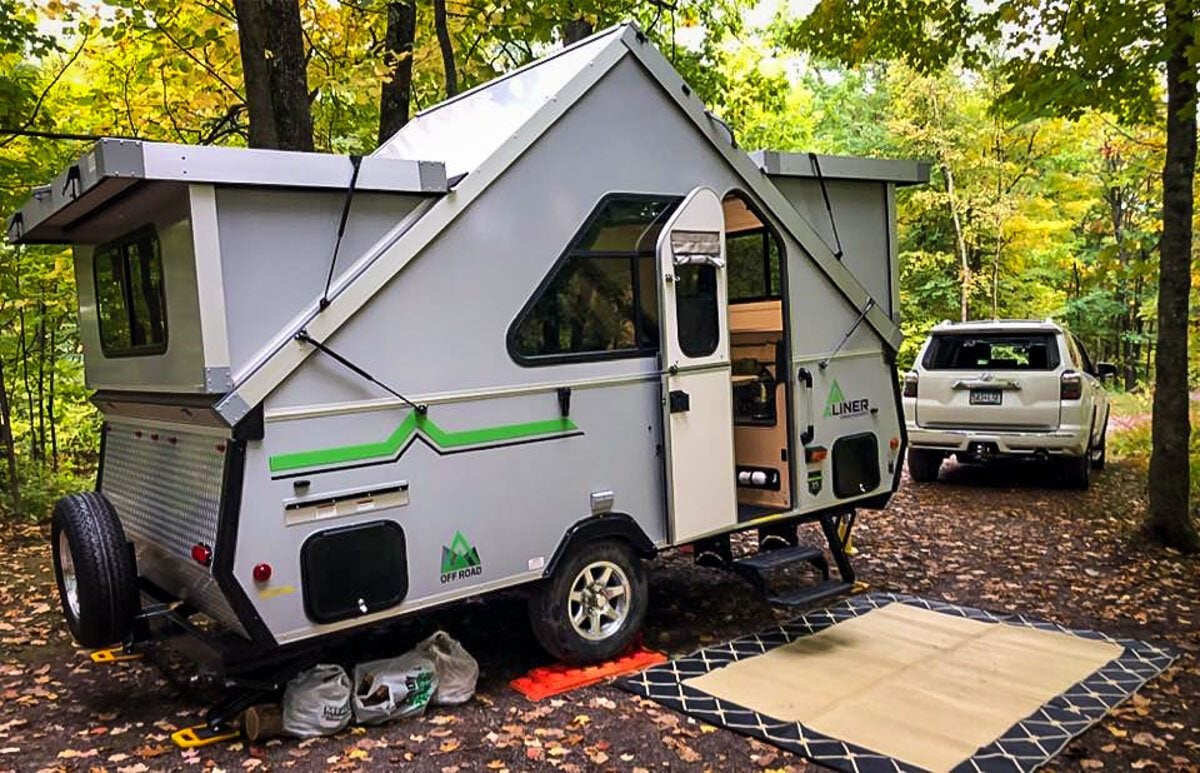
Are you sure it is a campervan you’re looking for?
For the purpose of this article, we are focusing on campervan conversions. But we do want to point out that there are many other great options for adventure vehicles, so be sure you consider them all before looking solely at vans.
So before you dig any deeper, let’s make sure that it really is a campervan that you’re seeking…
- Tow-behind camper options
- pop-up camper, A-liner, Airstream, teardrop
- Larger options
- RV (there are many different sized RVs and motorhomes to choose from)
- More info: Check out this list of tips if you’re interested in learning more about RV Living.
- Already have a vehicle?
- Truck Camper
- Rooftop Tent
- Alternative conversions
- Skoolie (aka converted school bus)
- Ambulance or old food truck conversion (we’ve seen some really cool ones!)
- Convert your minivan or SUV or Jeep for a super budget (and simple) build
We’ve seriously considered all the options above, and for us a campervan is still the best choice. However, it may not be the best choice for you.
Things to consider
- Ask yourself if you want the vehicle integrated into your camper (aka a campervan, RV, skoolie), or if you’d prefer the vehicle to be separate (tow-behind options, truck camper, rooftop tent). Both options have pros and cons.
- And also consider what size vehicle you realistically feel comfortable driving. If you plan to go on lots of backroads, a super big vehicle (like a huge RV or a skoolie conversion) may not be a great option.
- If you have a large family or need more space, you might find yourself more comfortable in a “skoolie” conversion or a tow-behind camper like an Airstream.
- Alternatively, if you want something super simple and already have a vehicle that would with a roof rack, you might love a rooftop tent or a simple build to rig our your SUV or minivan.
This is not a one-size-fits all decision, so be sure that you really look at all options before beginning your search.
Where to look for vans
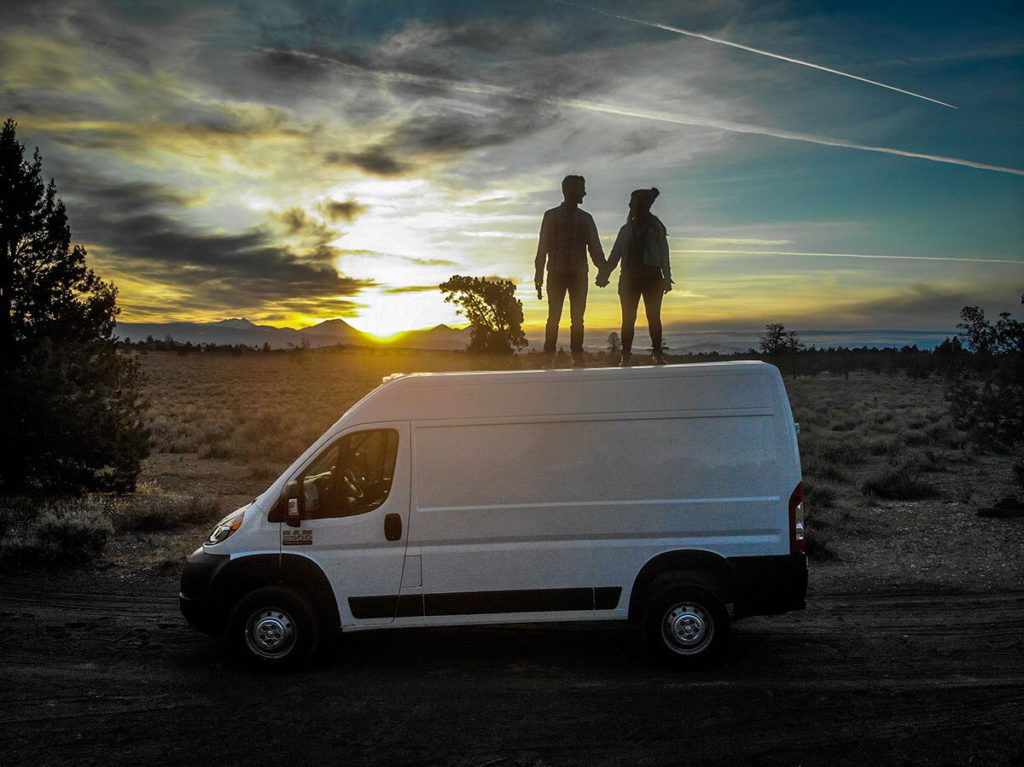
Another question we get asked a lot is, “Where should I start looking for a vehicle for my campervan conversion?”
Let’s go over the options:
- Craigslist: This is personally where we’ve found both of our vehicles. (Our first van was bought from a private party while our second was through a small dealer.)
- One thing to point out is that in the last couple of years we’ve seen more and more dealers listing vehicles on Craigslist, sort of under the guise of being a private party. During our last search, we hardly found any vans for sale through regular people.
- Facebook Marketplace: You may find many of the same vehicles that are listed on Craigslist, but every once in a while you might find one that’s not.
- Local dealership: This is another place to check, whether you’re looking for a new or used vehicle. Even though we found our van on Craigslist, it was at a (very small, one-man) dealership.
- Friends and family: It might be worth a try asking your network if anyone has a vehicle they’re wanting to sell. You may get a good deal, though if you have a specific vehicle in mind, this might be a long shot.
Insider Tip: Look on all these platforms so you can compare! Someone might list a vehicle on Facebook Marketplace but not put it on Craigslist.

Looking for a van that has already been converted?
Conversion Trader is a good place to start (if you’re US-based). It’s a site where individuals can list their already built-out rigs. There’s everything from super luxe (and pricey!) Sprinter conversions to well-priced basic builds. This site also has a selection of skoolies, RVs, conversions that are handicap mobility friendly, unfinished builds, etc.
The site is pretty user-friendly and allows you to filter by make & model, price, etc. One thing to remember as you’re searching this site is that it shows you vehicles from all over the United States. While you might find a great rig, consider the travel involved in seeing it as well as registering the plates in your home state.
Our advice: Start looking as soon as possible!
Even if you’re not ready to purchase a van right now, begin your search ASAP! This will help give you an idea of what you’re local market is like:
- Are there lots of vans for sale in your area, or are they rare?
- Do vans tend to stay on the market a while, or do they disappear shortly after being listed?
- What is the average price you’re seeing for the type of vehicle you’re looking for?
- What is the typical mileage?
- Are most of the vans in your market older or new?
Where are you willing to search?
Also, it may be helpful to think about how far you’d be willing to go to look at a van. For example, we were looking within a radius that equated to a 4-hour drive in all directions. We live in Bend, Oregon, but drove 3.5 hours to Portland to test drive our van (and eventually purchase it!).
We’ve known people who have flown to different cities around the country to scoop up a van they saw listed online. If that sounds like something you’d be able to do, you could try widening your search.
That said, you will likely need to go through the process of reregistering the vehicle in your state/region which can add an extra expense, not to mention the cost of travel getting there and back.
How quickly do you plan to jump on listings you’re interested in?
Lastly, it’s also good to know how quickly you’d be able to jump on a good van and go.
Do you work a traditional job and are only able to take off on the weekends? If so, you may need to factor in a bit more time for your search.
Or can you be flexible and go as soon as you see a good listing? If this is the case, you might be able to jump on a vehicle before others get the chance and have a bit of a shorter search. Thankfully, this is how we snagged our most recent van. It was listed in the morning, and we were driving off with it by the afternoon!
Tips for looking at a used van
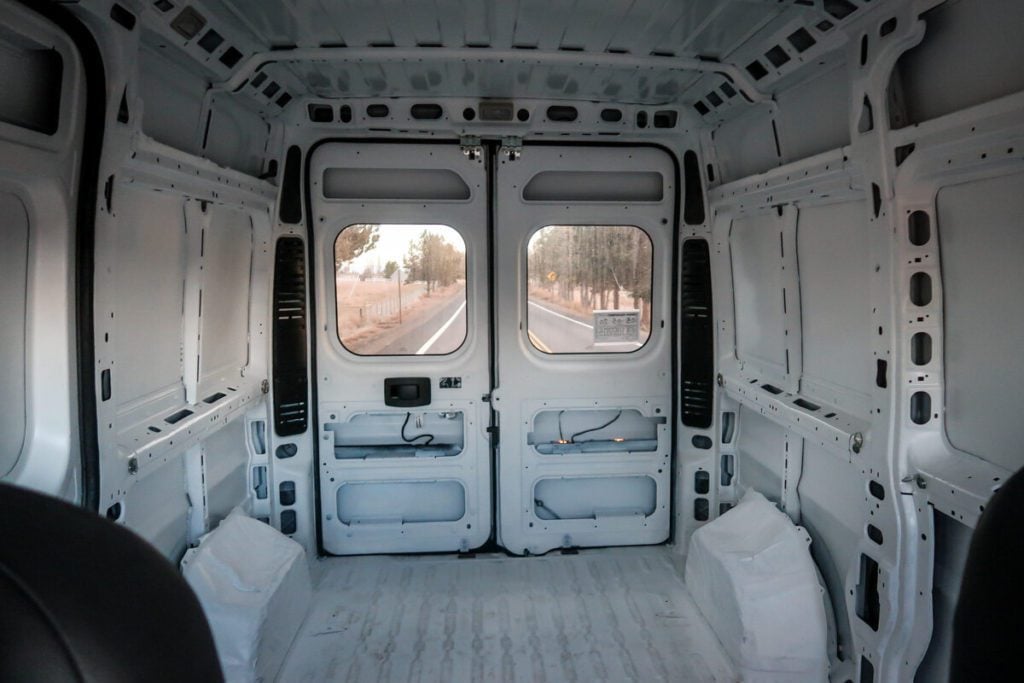
So you’ve found a van online and set a time to meet up with the seller, but what do you look for once you get to the van? Just like buying a used car, you’ll want to thoroughly vet the van for any red flags or things that might cause you pain later down the road.
Things to check
- Verify the mileage
- Check the tires: see how worn down the treads are. If you will need a new set of tires soon, this is something you could potentially negotiate into the price.
- Seatbelt: Are there tears in it? This can indicate that the van was in an accident. Just take a look to make sure seatbelts are in place and work properly.
- Check the oil: Is it at the correct level? If it’s super dark in color, you’ll probably need an oil change soon. (Tip: Bring some paper towels so you can wipe the oil off and dip it in again to check the color.)
- Rust: Are there major rust spots? Peek under the van and look for rust in the undercarriage and wheel well.
- AC & Heat: Turn each on at full blast and see how well it works. Our first van had no AC and lemme tell ya, our summer road trip was hot (especially in places like Utah!)
- Do the lights and flashers work?
- Electric components: Check that the radio, windows and all electronic components work properly
- Do all the doors open, close and lock like they should? Locking doors are important for a van with all your valuables inside.
- Now it’s time to test drive!
- Does it have good brakes? Any noises from the engine? Does it accelerate smoothly, etc.
- Do you hear any unusual sounds?
- How does it feel driving (bulky or comfortable?)
- Ask the owner if there are any issues you need to know about.
Insider Tip: If you are new to buying used vehicles, you may want to consider having a mechanic take a look at the vehicle and let you know if there are any major issues. If you’re purchasing from a dealership, you can sometimes negotiate adding a pre-inspection into the cost of purchasing the vehicle. If you’re purchasing through a private party, you can call a nearby mechanic and ask for a quote. This service will typically range from $100 – $200, but could save you a bit of money down the road.
Another thing to consider is getting a vehicle history report (like CarFax or AutoCheck). These should show you any notable history the vehicle has (like accidents). A dealer should be able to provide you the link to this report for free. If you’re purchasing through a private party, this report costs a fee ($25 for AutoCheck and $40 for CarFax).

Are you buying a van that has already been converted?
We’ve known of lots of vanlifers who bought a pre-built vehicle only to have systems break down with no knowledge of how to fix them.
In addition to everything above, you’ll want to also check out the following conversion components and ask lots (and lots!) of questions so you’re not left in the dark:
- Be sure to know how all the systems work:
- Electrical
- Know how your batteries are charging and how all the components work
- Learn the size of the batteries
- Learn the size of solar panel (if applicable)
- How do you monitor the battery life?
- Water
- Where to fill and dump?
- How often do you need to fill/dump?
- Learn where the water lines run
- Propane
- what safety features are in place?
- Is there an Carbon Monoxide and Propane alarm installed?
- Where does the propane line go? Is it exposed or tucked behind the kitchen?
- Toilet
- learn how to operate and empty
- Electrical
- Does the table convert into a bed? If so, learn how to set up and take down.
- Learn what the van was insulated with.
Tip: One way to think about it is to look at the Kelly Blue Book price of the vehicle to see what it is worth on its own. And determine if you think the build is worth the remaining amount.
Popular vans for camper conversion & their specs
Below we’re going over the best vans for conversions. We’ll go over their specs (aka how big or small they are), as well as price tag, and pros and cons.
Good to know: Depending on where in the world you are based, some of these vehicles may not be widely available. We tried to include a variety so that you hopefully find at least one or two on this list that are available in your region.
1. Dodge Ram ProMaster
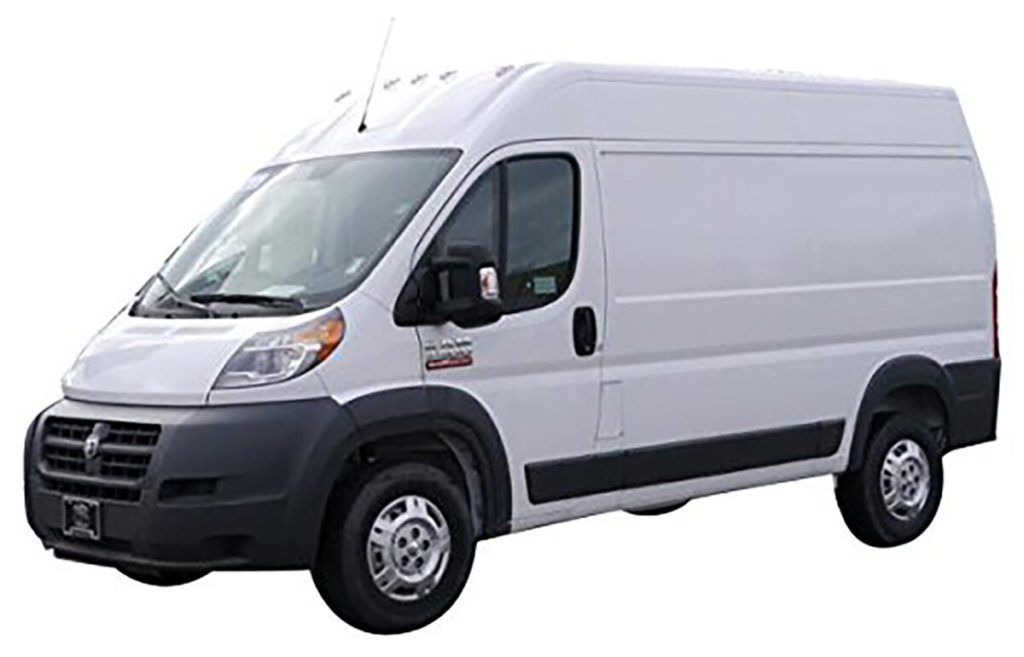
The ProMaster has been a part of the Dodge Ram family of cargo vehicles since 2014. Part of the appeal of this vehicle is its square shape, which can be a great feature for custom builds.
Alternatively, Mercedes Sprinters have a more rounded shape as the walls taper in near the top.
The ProMaster also has a wide cargo space—one of the widest on the market—which allows you to comfortably fit a standard full-size mattress side-to-side across the back.
Another thing that makes this vehicle great for campervan builds is the many different options for length and height. With many model years on the market, there are ample opportunities to find the exact make to fit your custom needs.
Available lengths:
- Standard (older models): 118-inch wheelbase, 106.7 inches long
- Standard: 136-inch wheelbase, 213 inches long
- Long: 159-inch wheelbase, 236 inches long
- Extended: 159-inch wheelbase, 251 inches long
Roof heights:
- Low: Maximum height from floor to ceiling: 65.4 inches
- High: Maximum height from floor to ceiling: 76 inches
Cargo Width:
- Minimum cargo width: 55.8 inches
- Maximum cargo width: 75.6 inches
Towing capacity: 6,700 – 6,800 lbs. (depending on the model)
Pros
- One of the most “square” vans on the market
- This makes the installation of walls and cabinets easier than in the more curved cargo vans (Sprinter and Transit)
- American-made means generally cheaper maintenance and parts
- The only vehicle of its type with front-wheel drive, also has the best turning radius when compared to similar models
- Wide enough to fit a stand full-size mattress width-wise
Cons
- Can be tough to find quality used models with lower mileage
- No 4WD option
- Low ground clearance makes for little off-road capabilities
Cost to buy new in 2026: MSRP starting at $47,655
Examples of Dodge ProMaster conversions
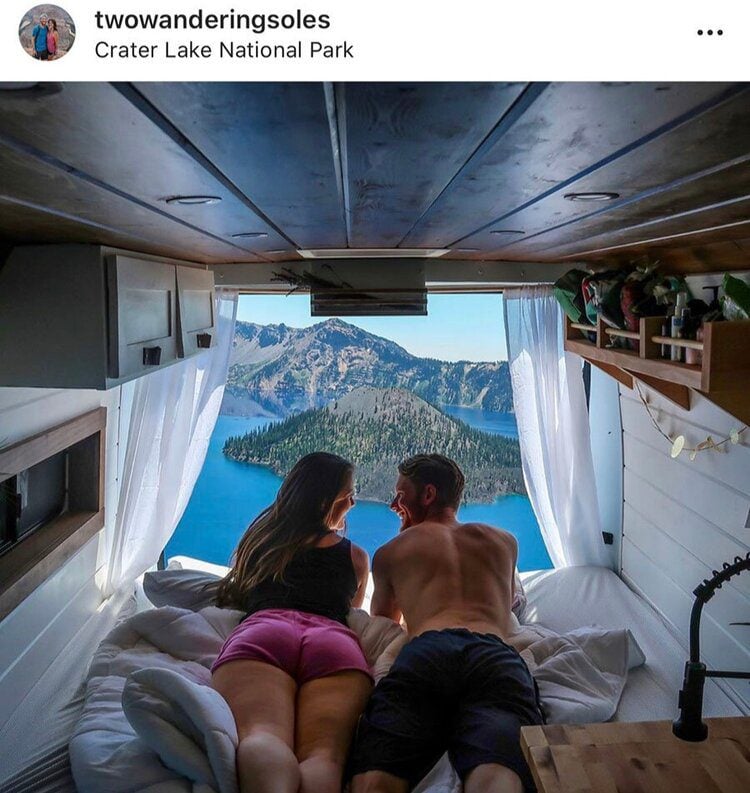
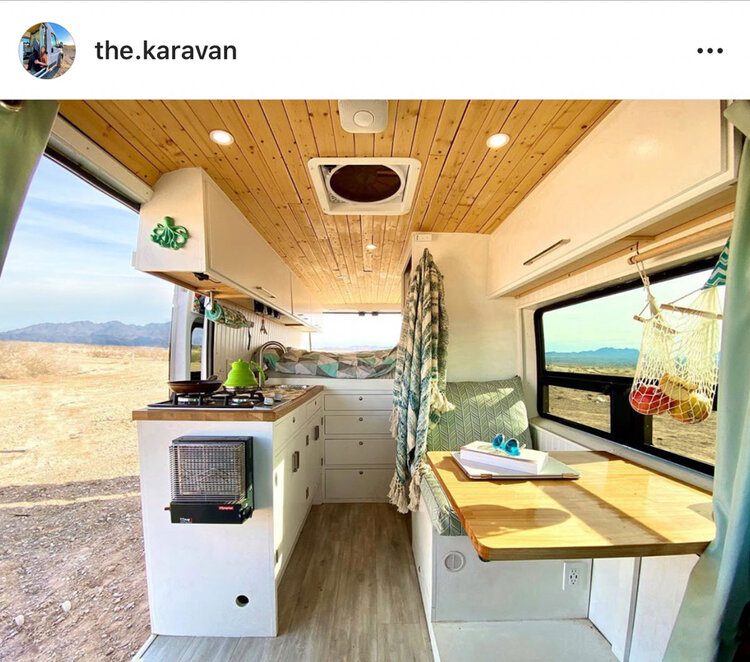
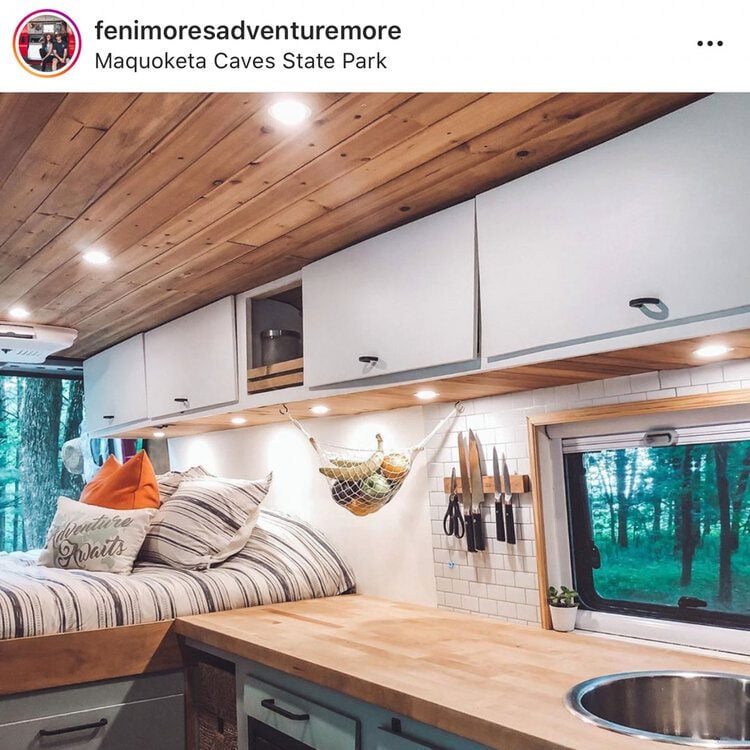
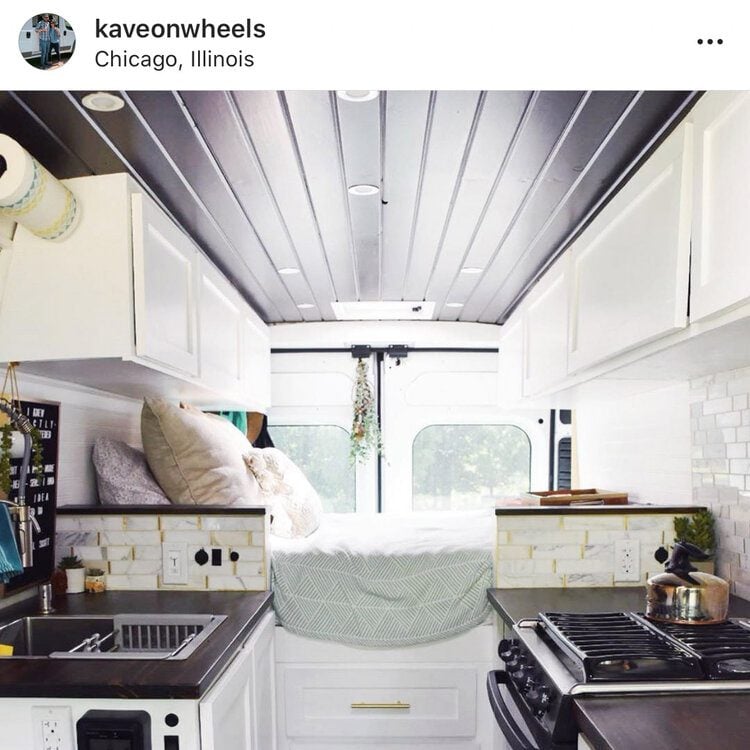
Alternative vehicles: Dodge Ram ProMaster City (discontinued in 2022)
The ProMaster City is a compact van tailored for urban settings and smaller payloads. It offers greater maneuverability in tight spaces and improved fuel efficiency, making it a practical choice for navigating city streets.
2. Mercedes Sprinter
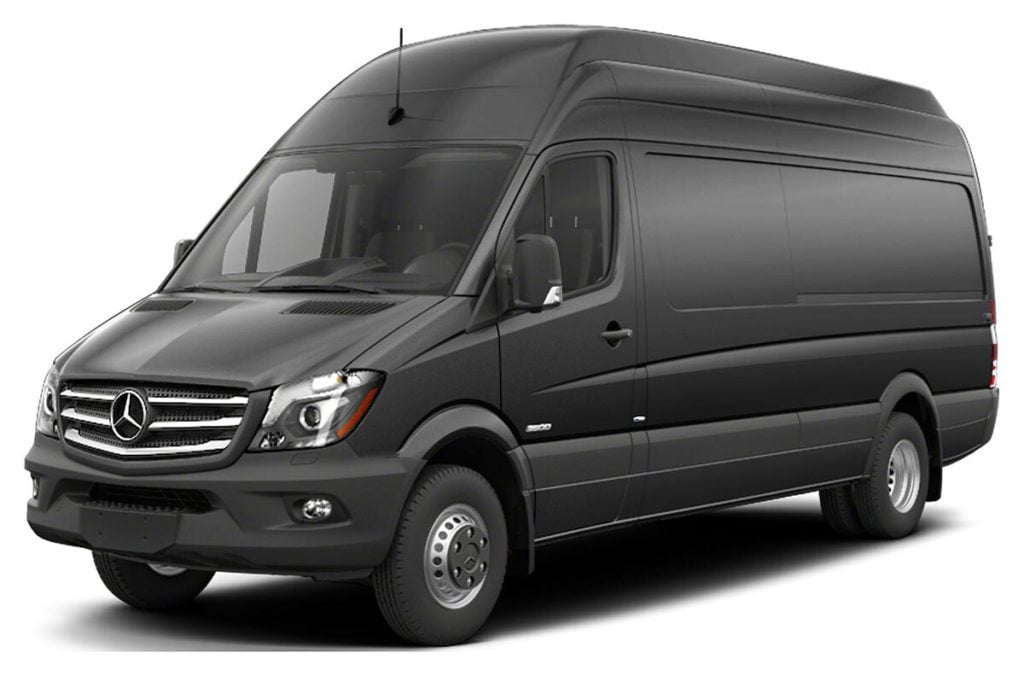
Probably one of the most iconic vans for camper conversion out there, the Mercedes Sprinter van gets a lot of attention in the vanlife world. Its popularity in part comes from the fact that this van model has been on the market long before the ProMaster or Transit were around, so there are a lot of them out there.
People also like that the Sprinter comes in a 4×4 option (for a while, it was the only 4×4 cargo van available) and that it has a diesel engine which is better for gas mileage.
One big factor to keep in mind about these vans is they tend to have an overall higher cost of ownership. The upfront cost of the van will be higher than some of the other vans available, and you’ll have to factor in the premium cost of maintenance.
While it’s a common myth that you have to get your Mercedes serviced at a dealership, you do have to look for a mechanic that works on European makes.
Sometimes (but not all the time), service and parts will cost more than American-made vehicles. This is just one thing to take into consideration before purchasing a Sprinter.
Available lengths:
- Standard: 144-inch wheelbase, 234 inches long
- Long: 170-inch wheelbase, 274 inches long
- Extended: 170-inch wheelbase, 290 inches long
Roof heights:
- Low: Maximum height from floor to ceiling: 68 inches
- High: Maximum height from floor to ceiling: 79 inches
Cargo Width:
- Minimum cargo width: 53 inches
- Maximum cargo width: 70 inches
Towing capacity: 5,000 – 7,500 lbs. (depending on the model)
Pros:
- Well-built reliable vehicles
- Plenty of space for luxury builds in the larger models
- Diesel engines = good gas mileage!
- Good for urban “stealth camping”
- Comes in a 4WD option
- Resale value tends to be higher
Cons:
- Higher cost of ownership in general (explained above)
- Limited qualified mechanics to work on these specialty vehicles makes traveling in remote areas more risky and complicated
- There is a common mechanical issue often referred to on the Internet as “black death” that is specifically found in Sprinter engines. Without getting too deep into the nitty gritty, essentially the seal on the fuel injectors can be faulty, causing a thick black residue to leak. This typically costs between $1,000 and $2,000 to have fixed.
- Tip: If you are buying a used Mercedes Sprinter, be sure to check under the hood for signs of this!
- Limited to biodiesel blends lower than 5% (in warranty coverage) and ultra low sulfur fuel options (not available in every country)
Cost to buy new: MSRP starting at $50,830
Examples of Mercedes Sprinter conversions
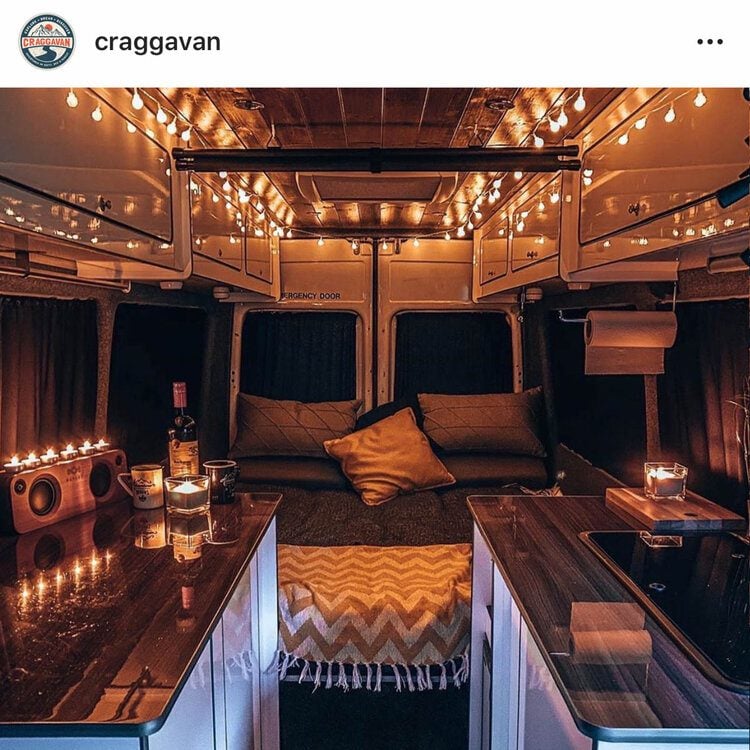
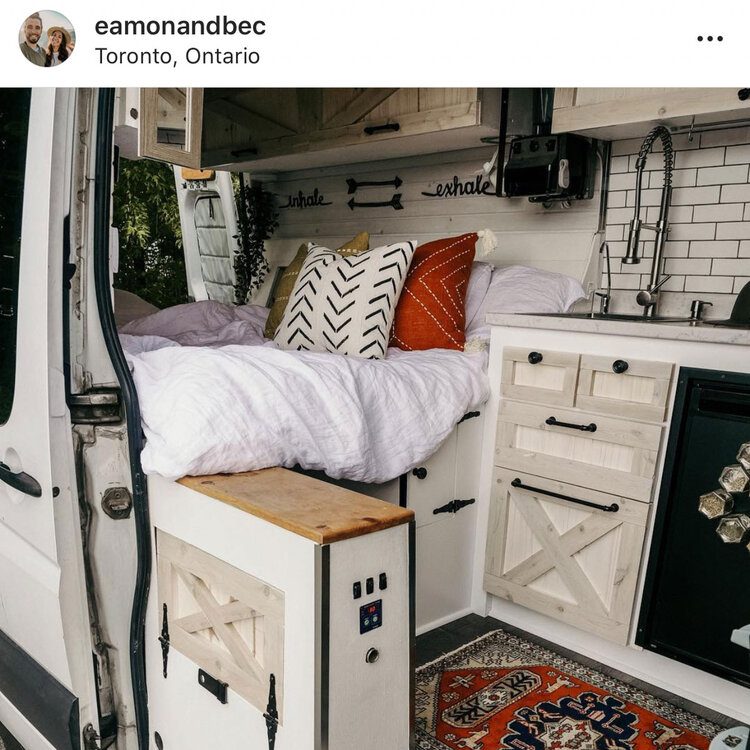
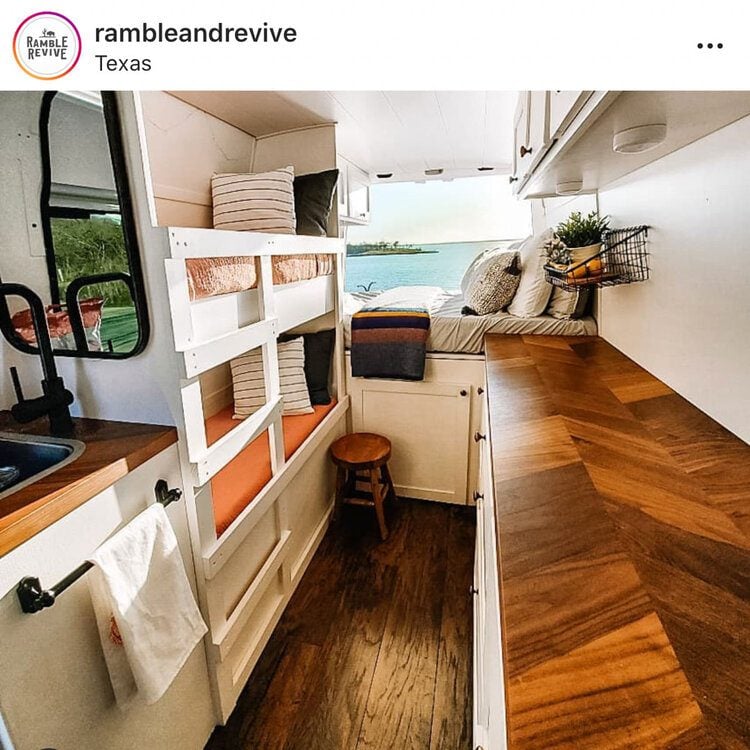
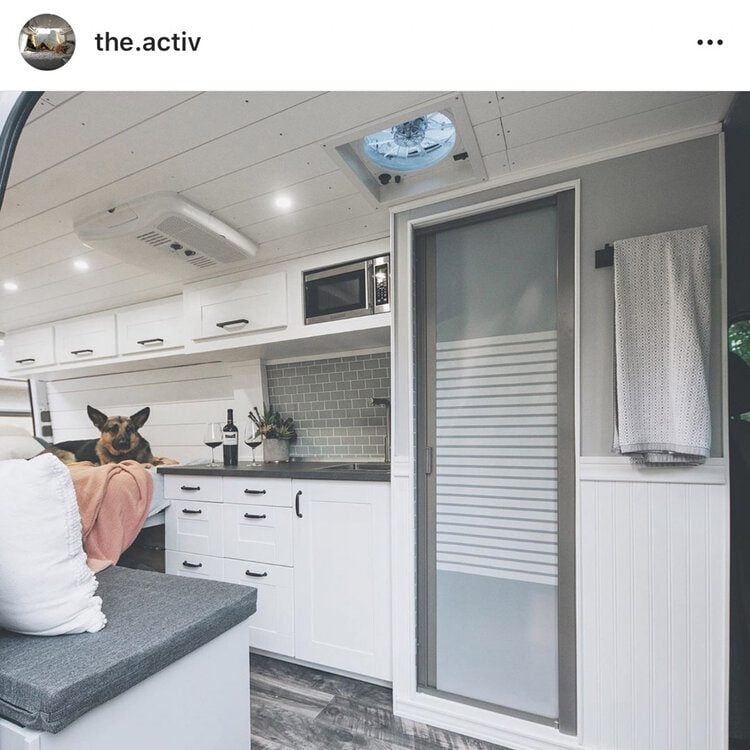
Alternative vehicles: Mercedes Metris Cargo
The Mercedes Metris is a mid-size van, providing a more compact footprint while still offering a respectable cargo capacity. The shorter wheelbase makes it more maneuverable in urban areas. Plus the smaller vehicle comes with a (slightly) cheaper price tag.
3. Ford Transit
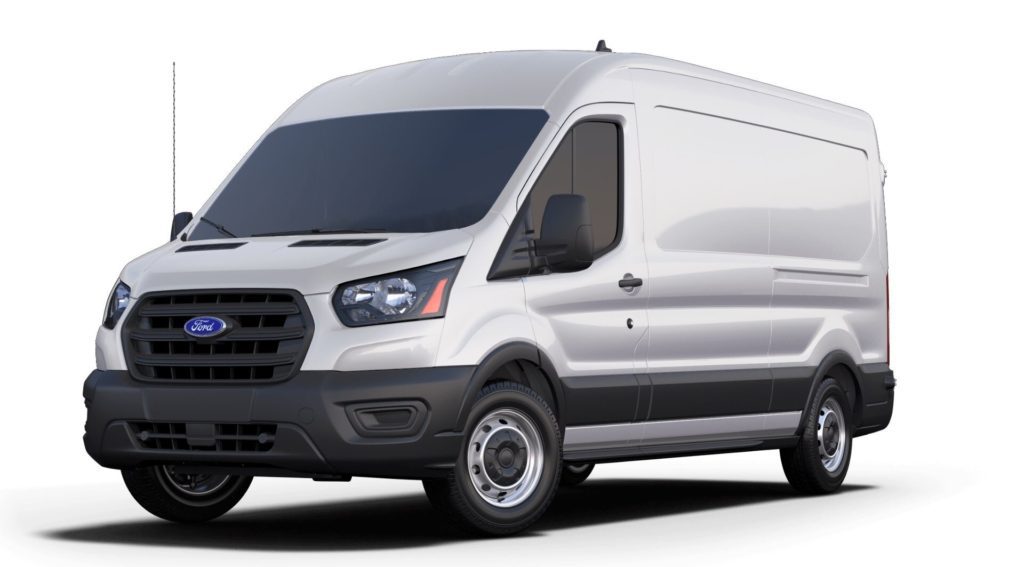
On the market in North America since 2015, the Ford Transit van may not be as notable in the campervan world, but it has dominated the market in terms of commercial van use. (This is one of the vehicles FedEx and other delivery services use!)
Part of the appeal of this vehicle is the many different options for length and width. The Transit offers the highest floor-to-ceiling height on the market, making it perfect for tall van-lifers.
However, there are some design aspects that make it more challenging for a custom build such as the shape of the interior cargo space and thickness of the walls.
The 2020 model got a complete overhaul including new options for AWD (all-wheel drive), different engines and other high-tech features. So the popularity of the Transits for camper conversion has been on the rise.
Available lengths:
- Regular: 130-inch wheelbase, 219.9 inches long
- Long: 148-inch wheelbase, 235.5 inches long
- Long EL: 148-inch wheelbase, 263.9 inches long
Roof heights:
- Low: Maximum height from floor to ceiling: 57 inches
- Medium: Maximum height from floor to ceiling: 72 inches
- High: Maximum height from floor to ceiling: 81.5 inches (yay for tall people!)
Cargo Width:
- Minimum cargo width: 54.8 inches
- Maximum cargo width: 69 inches
Towing capacity: 4,000 – 6,900 lbs. (depending on the model)
Pros:
- Highest roof available of its class
- American made means generally cheaper maintenance and parts
- Can be tough to find quality used models with lower mileage
- 3.5L Eco-Boost engine offers 20 mpg on average
- Option to convert the Transit to 4×4 drive (2020 models will have the option built-in)
Cons:
- The walls are very thick, leaving wasted space and a shorter width compared to similar models
- Curves in the roof can prove tricky for some custom builds
- The extended version has the longest rear overhang, easier to scrape coming down hills, even driveways
- Has the longest nose on the van, compared to equal length vans you’ll get less interior length
- If you convert the Transit to 4×4, you’ll also have to modify the wheel wells to add bigger tires
Cost to buy new: MSRP starting at $58,795
Examples of Ford Transit conversions
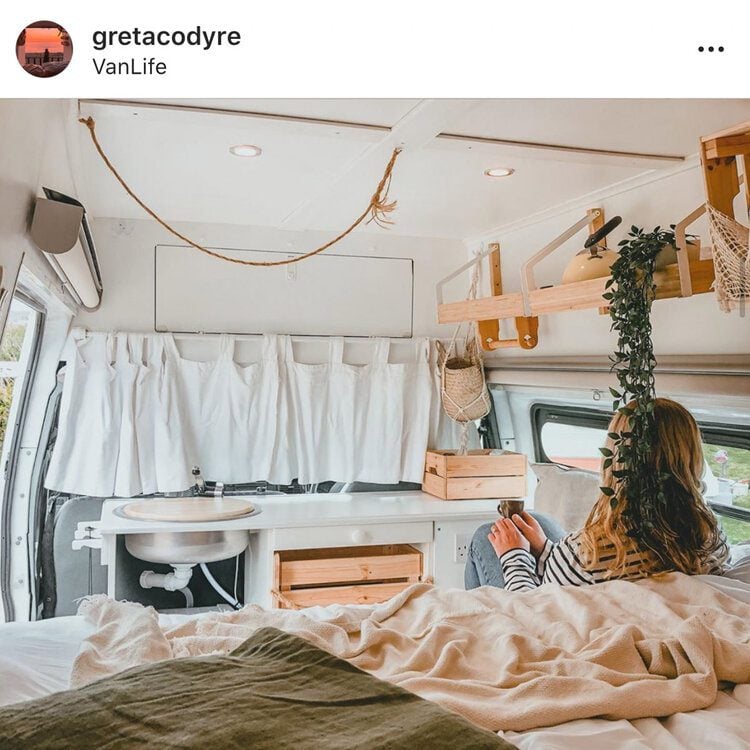
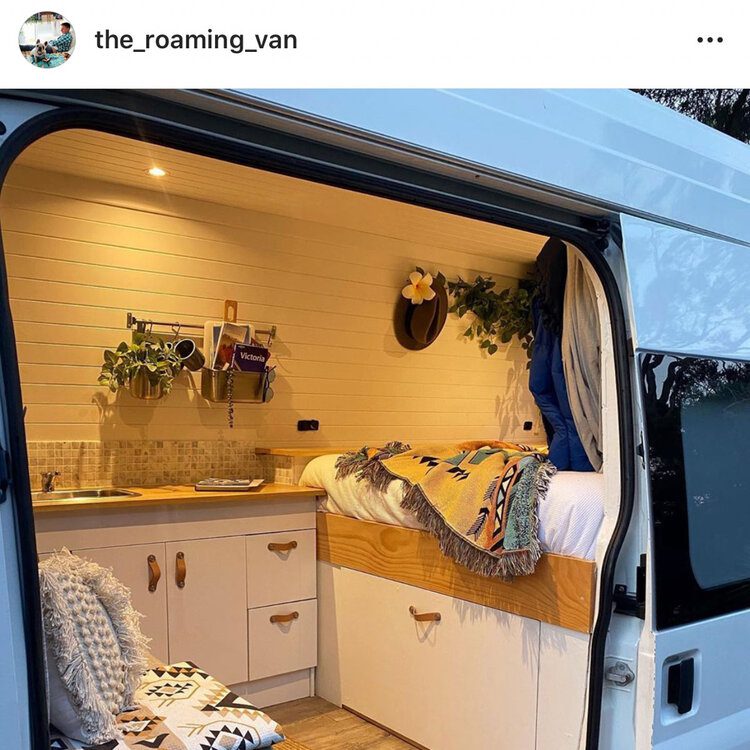
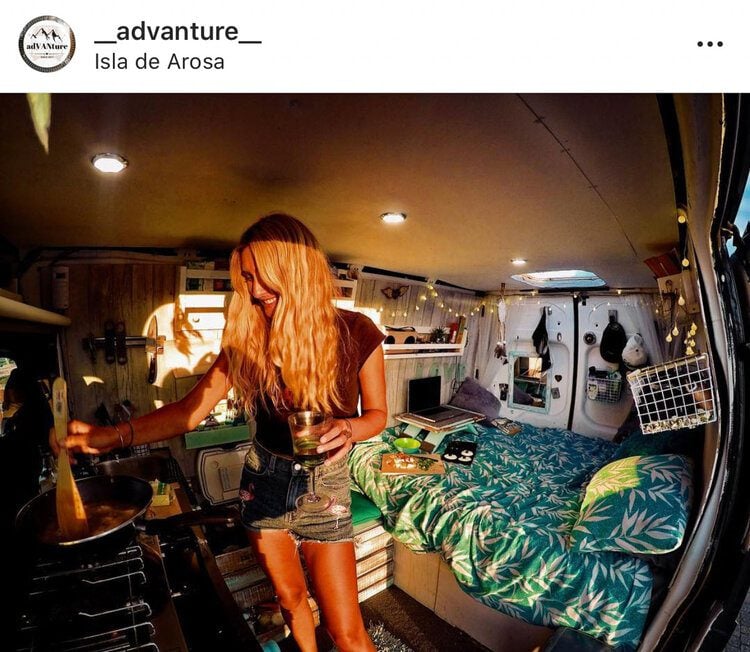
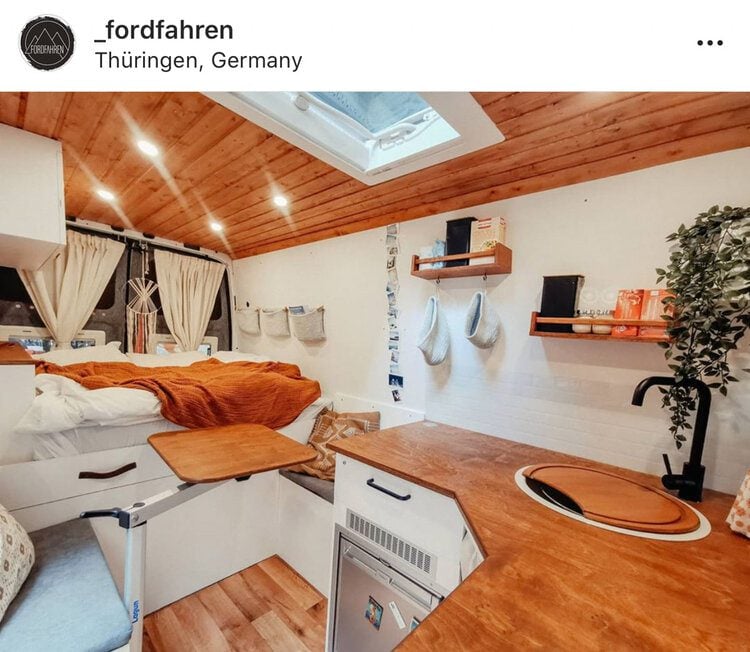
Alternative vehicles:
- The Ford Transit Connect is a small van tailored for urban maneuverability. It offers a more modest cargo capacity, which isn’t as ideal for campervan conversions. The Transit Connect’s smaller size makes it a practical choice for efficiency and versatility in more confined spaces.
- The Ford Transit Custom is a mid-sized commercial van and part of the Ford Transit lineup. The Transit Custom is positioned between the smaller Ford Transit Connect and the larger Ford Transit, offering a balance of cargo capacity and maneuverability.
Psst! Want to save yourself the headaches and hours of research we went through and get straight to building the campervan of your dreams?? Learn more about Van Conversion Academy
4. Nissan NV Cargo
Discontinued after 2021
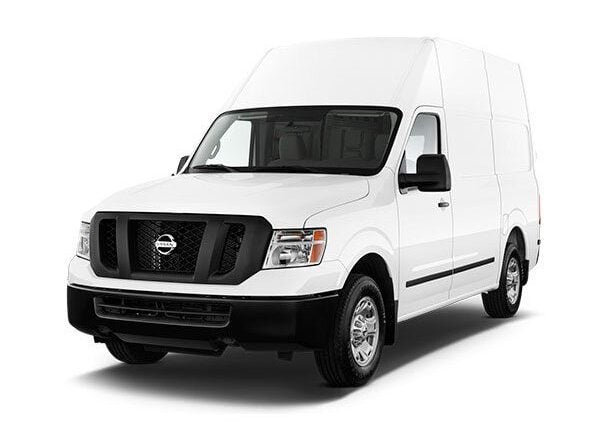
The smaller of the cargo vans without a lot of options, the Nissan NV is built more like a truck than a van.
This is a great option for a solo van-lifer who doesn’t need as much interior space, but wants to take their van off the grid. The option for an aftermarket 4×4 conversion and larger tires without modifying the wheel wells makes it the best off-road van life vehicle.
Available lengths:
- Standard: 146.1-inch wheelbase, 120 inches long
Roof heights:
- Standard: Maximum height from floor to ceiling: 55.8 inches
- High: Maximum height from floor to ceiling: 76.9 inches
Cargo Width:
- Minimum cargo width: 54.3 inches
- Maximum cargo width: 70.2 inches
Towing capacity: 2,000 lbs.
Pros:
- There are aftermarket options to convert to 4×4, plus room for larger tires
- The 8-cylinder engine option offers a lot of power
- Built more like a truck than a van, better for overland adventures with the 4×4 conversion
- Nissan’s 5-year/100,000 mile warranty is the best commercial van warranty offered
Cons:
- Has the longest nose on the van, compared to equal length (and even shorter) vans you’ll get less interior length
- Only available in Rear Wheel Drive unless you do the aftermarket conversion
- These vans aren’t as common so it’ll be harder to find quality used models
Examples of Nissan NV conversions
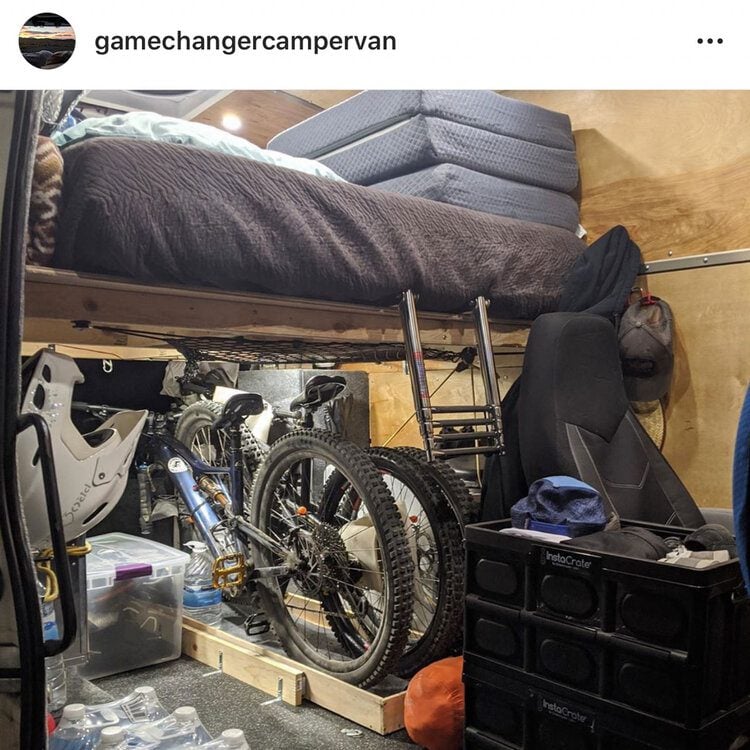
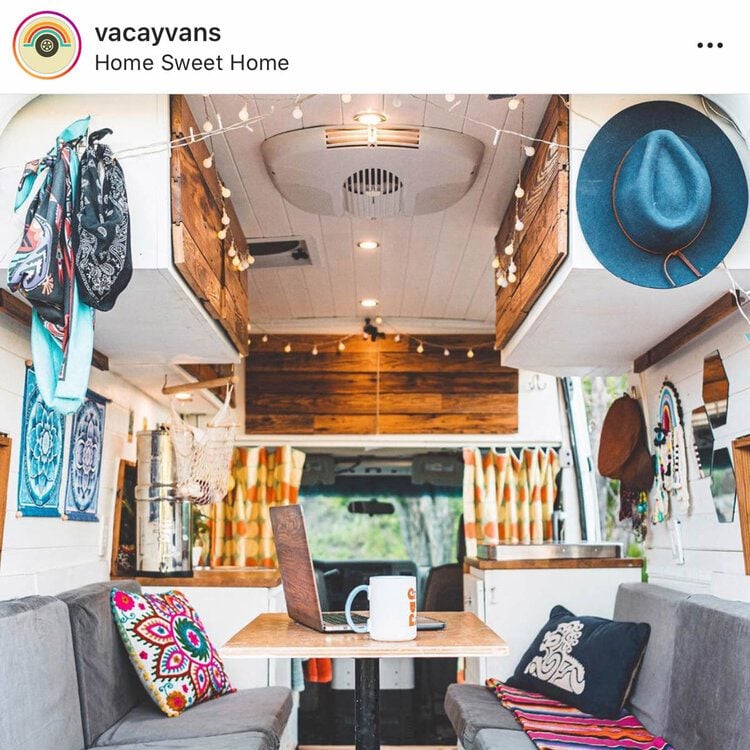
5. VW Bus or Vanagon
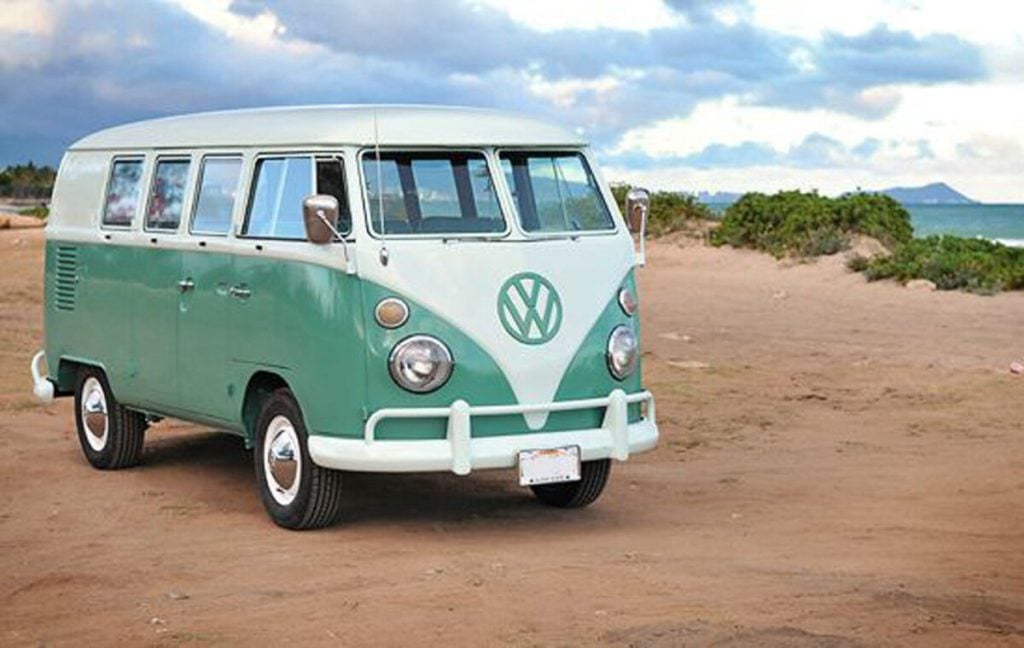
Volkswagen undoubtedly has the biggest cult following of any vehicle on this list (yes, even more than Sprinters).
In the VW world, there is a big debate about which is better: VW Bus or the Vanagon.
There are diehards on both sides, and quite honestly, they serve two very different people. We’ll delve into the details of each, but here’s a basic gist:
- The VW Bus is more nostalgic and popular with collectors. People love the feeling of driving these retro rigs.
- The Vanagon is more suited to be an adventure vehicle and is more roomy. We’ve also read on some forums that the Vanagons tend to have fewer mechanical issues but can be more expensive.
There’s a good chance that these vehicles will come pre-converted, which can be a good thing or not so much depending on what you’re looking for…
Something to think about: Maybe you like the idea of purchasing something that’s ready to hit the road, or maybe you’d prefer to build it on your own. Maybe you love the charming vintage interior, or perhaps it feels outdated and not your style… In this case, the good news is that it would be pretty easy to add some aesthetic touches to make it your own!
VW Bus
Cartoons of campervans often depict the iconic VW Minibus. And for good reason: They’re super groovy, baby!
Sometimes referred to as “the original campervan”, these vehicles have long been loved since they first hit the market in the mid-1900’s.
People are drawn to them for the throwback nostalgia connection to the Summer of Love and hippies of the 60’s and 70’s. (The first generation of the Bus came on the market in 1950 and the second generation took over until 1979.)
VW stopped making their iconic buses in 2014, making the demand for them higher than the supply. This means that finding a well-maintained VW Minibus in good working condition can cost you a pretty penny, unless you get very lucky!
The good news is, there is a large community to support the upkeep of these vehicles, plenty of aftermarket additions and variations to explore. Plus, with a huge following of VW lovers, the resale value tends to be high.
Available length:
- Standard: 94.5-inch wheelbase, 106.3 inches long
Roof height:
- Standard: Maximum height from floor to ceiling: 53.1 inches
- Option for a pop top (may already come with one installed)
Pros:
- Large community of support, aftermarket parts and modification options
- There are even companies who will replace standard VW bus engines with 100% electric options to turn your bus into an eco-friendly camper
- Let’s face it, the iconic models are just plain adorable!
Cons:
- Can be a pretty high initial investment to find one in good working shape
- Old models may have high mileage and/or need lots of repairs
- You won’t be “stealth camping” in this
- Not as much headroom (unless you have a pop-top)
- Old models are no longer in production, so parts can be expensive and hard to find
- These vehicles are rear wheel drive, which can be difficult in some driving conditions
- VW Buses come with windows already installed, which can give lots of natural light but will make it hard to control the temperature inside the van
Cost to buy VW Buzz Electric Minibus: MSRP starting at $59,995
Well-maintained vintage buses can sell for six figures (one was reportedly sold in 2017 for more than $300k!). Yikes. However, the median auction price of a nice minibus is about $50,000.
VW Vanagon
So similar to the VW bus that oftentimes the names are unknowingly used interchangeably. The VW Vanagon is actually larger, heavier and more rectangular in design than its predecessor.
Vehicles known as the “Vanagon” in the US are actually the third generation in the line of Volkswagen Type 2s that came out in 1979, following the first and second generation “Buses”.
The name Vanagon was coined by VW to signify the vehicle has the roomy feel of a van, but drives like a station wagon.
Available length:
- Standard: 96.9-inch wheelbase, 179.9 inches long
Roof height:
- Standard: Maximum height from floor to ceiling: 51.7 inches
- Option for a pop top (may already come with one installed)
Pros:
- Larger in size and interior space than the Bus, so you’ll have more room for a conversion
- Engineered with more safety features
- More practical than the minibus for general transportation
- These vehicles are 4WD
Cons:
- Slightly higher maintenance costs than their minibus predecessors
- Vanagons come with windows already installed, which can give lots of natural light but will make it hard to control the temperature inside the van
Examples of VW Minibus & Vanagon conversions
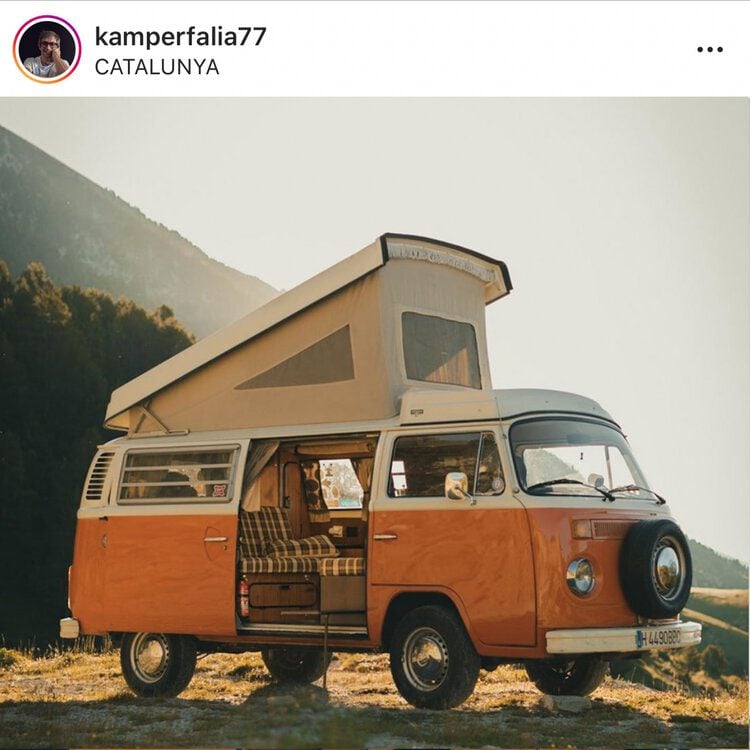
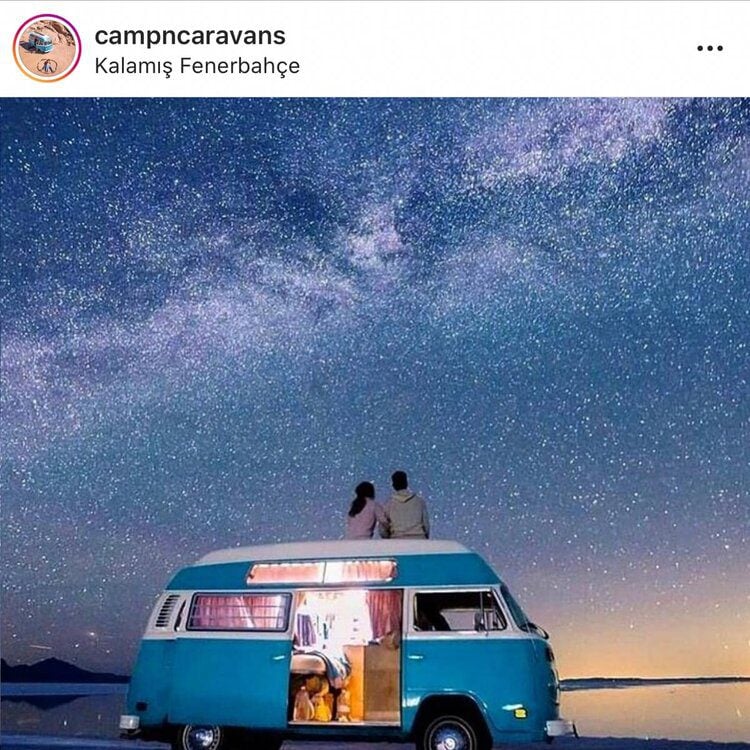
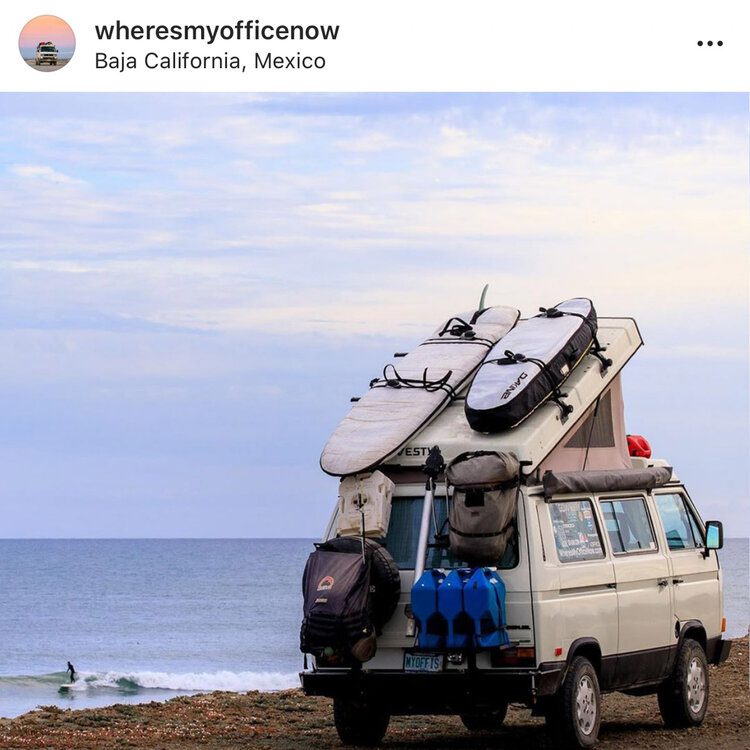
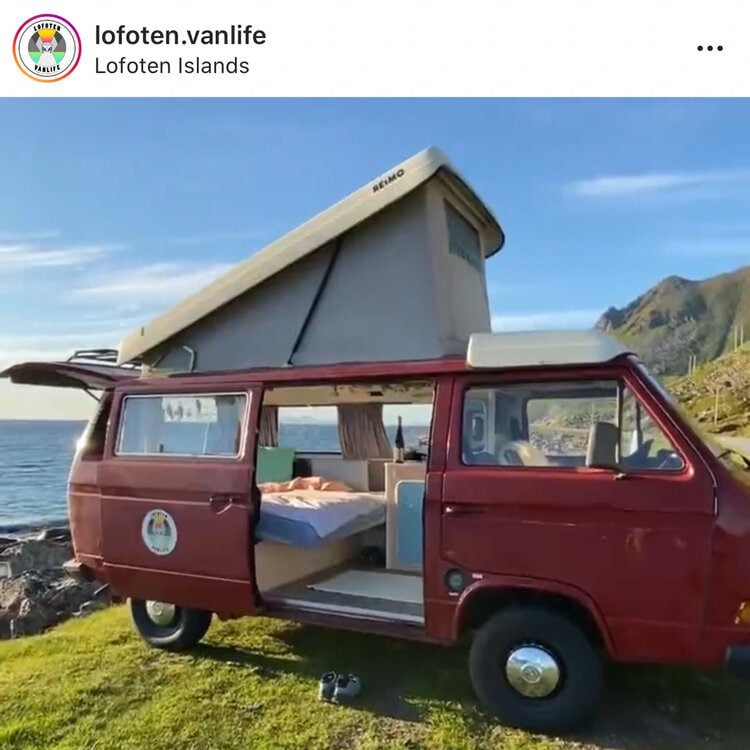
Insider Tip: If you’re keen on getting a VW bus or Vanagon, we’d recommend researching the different years because they vary quite a bit in their features and specs. This guide gets pretty detailed on the specifics of each year it was manufactured. Some years are known for being really sought-after, while other years are known for have a less safe design.
6. VW Crafter
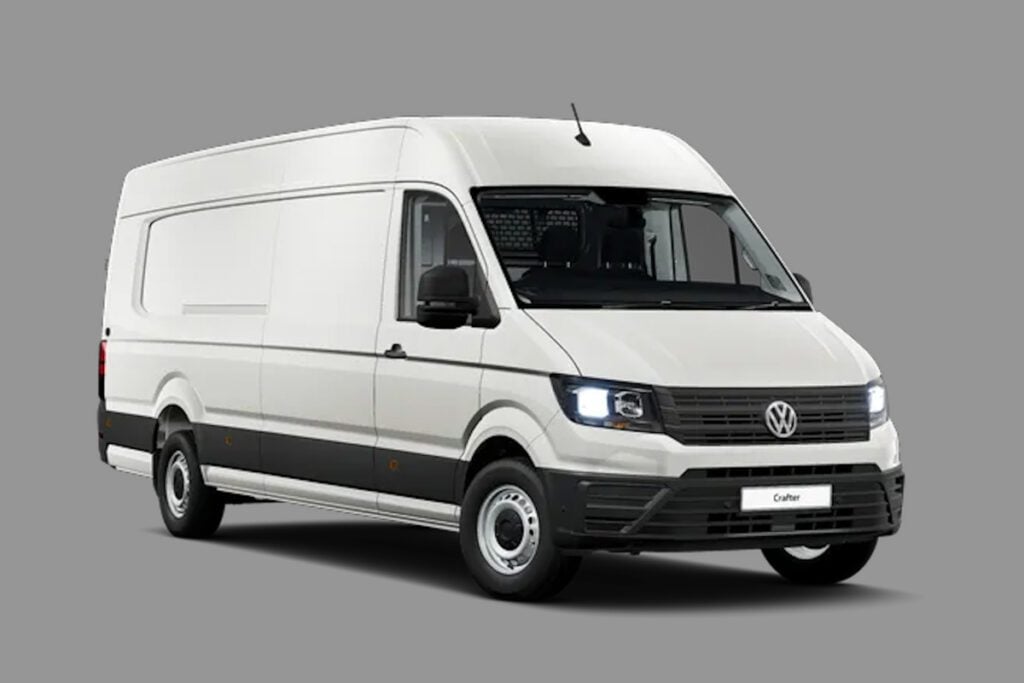
The Volkswagen Crafter is a versatile cargo van gaining popularity for camper van conversion across countries outside of the US (Europe, Australia, Canada, etc.). As it’s not sold in the US, this one is a comparable option to the Promaster.
Similar to the Dodge Ram ProMaster, the VW Crafter boasts a square shape, facilitating straightforward custom builds with easily installable walls and cabinets. With ample cargo space, it accommodates a standard full-size mattress side-to-side, providing comfort for your camper lifestyle.
Available in various lengths and heights, the Crafter offers flexibility for customization, making it suitable for a range of campervan layouts. The numerous model years in the market provide options to meet specific size requirements for your custom needs.
While lacking a 4WD option, the Crafter is recognized for its reliable European engineering, and the availability of qualified mechanics for routine maintenance contributes to its appeal for camper conversions.
Available lengths:
- Medium: 3,250 mm (128.0 in) wheelbase
- Long: 3,665 mm (144.3 in) wheelbase
- X-Long: 4,325 mm (170.3 in) wheelbase
Roof heights:
- Low: Maximum height from floor to ceiling: 1650mm (65 inches)
- High: Maximum height from floor to ceiling: 1940mm (76 inches)
- Super High: Maximum height from floor to ceiling: 2140mm (84 inches)
Cargo Width:
- Minimum cargo width: 1030mm (41 inches)
- Maximum cargo width: 1832mm (72 inches)
Towing capacity: 2,500 – 3,000kg (5,500 – 6,600 lbs. depending on the model)
Pros:
- Square shape facilitates easy installation of walls and cabinets.
- Ample cargo space with various length and height options.
- Reliable European engineering with accessible maintenance services in Europe.
Cons:
- Not sold in the US.
- No 4WD option available.
- Limited availability of qualified mechanics for VW Crafters in some areas (such as the US)
- Higher upfront cost compared to some American-made vans.
Examples of VW Crafter conversions
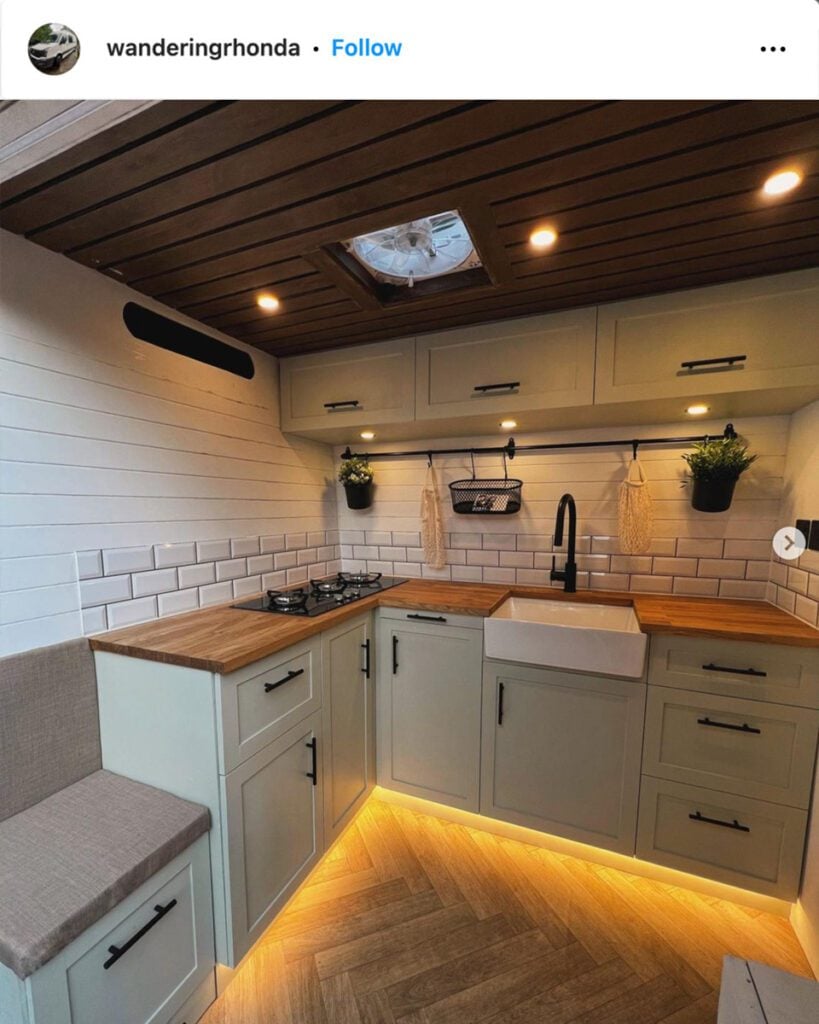
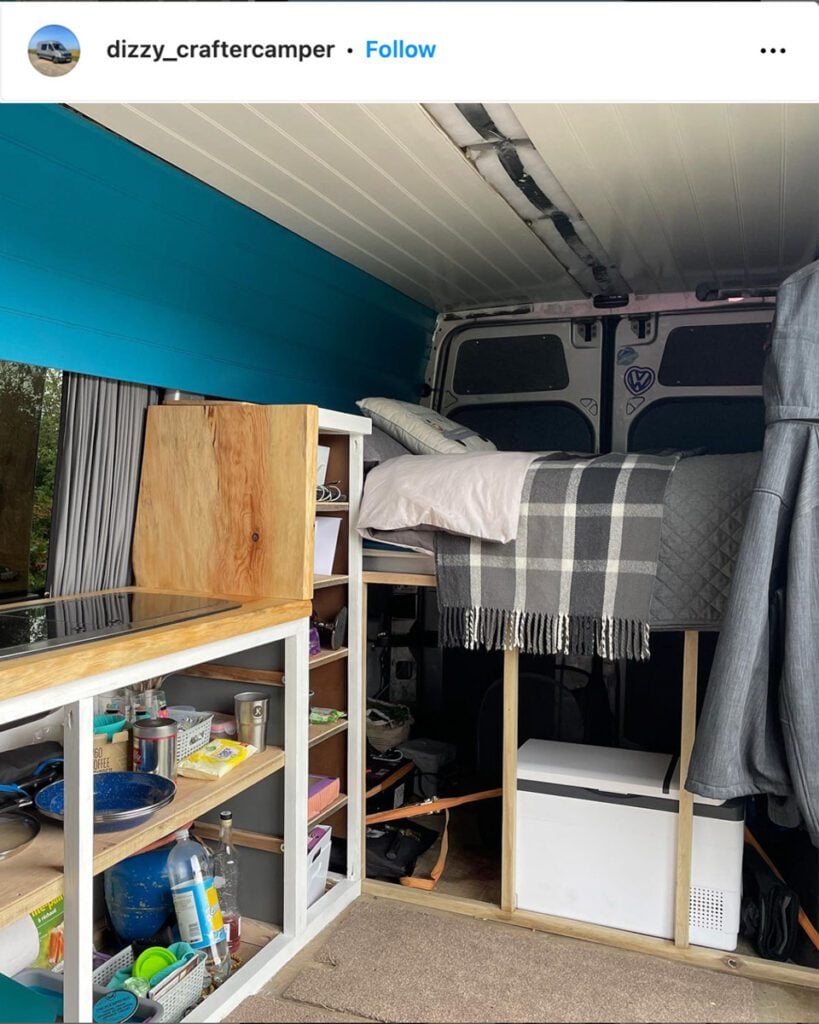
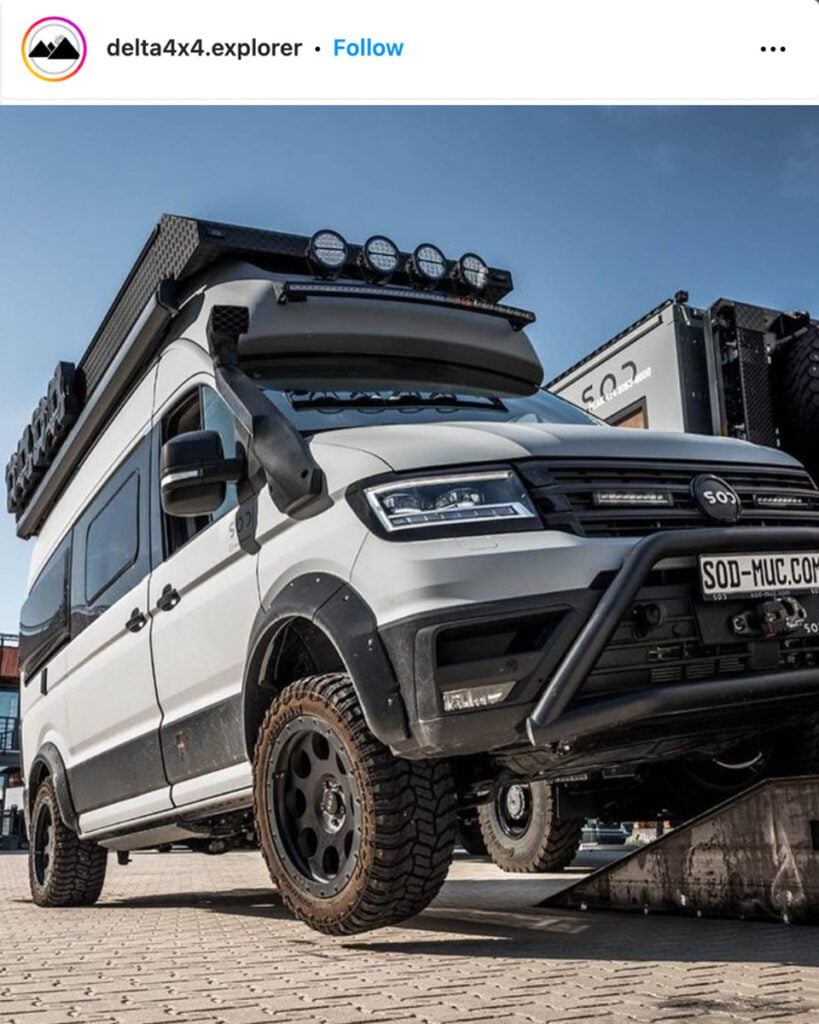
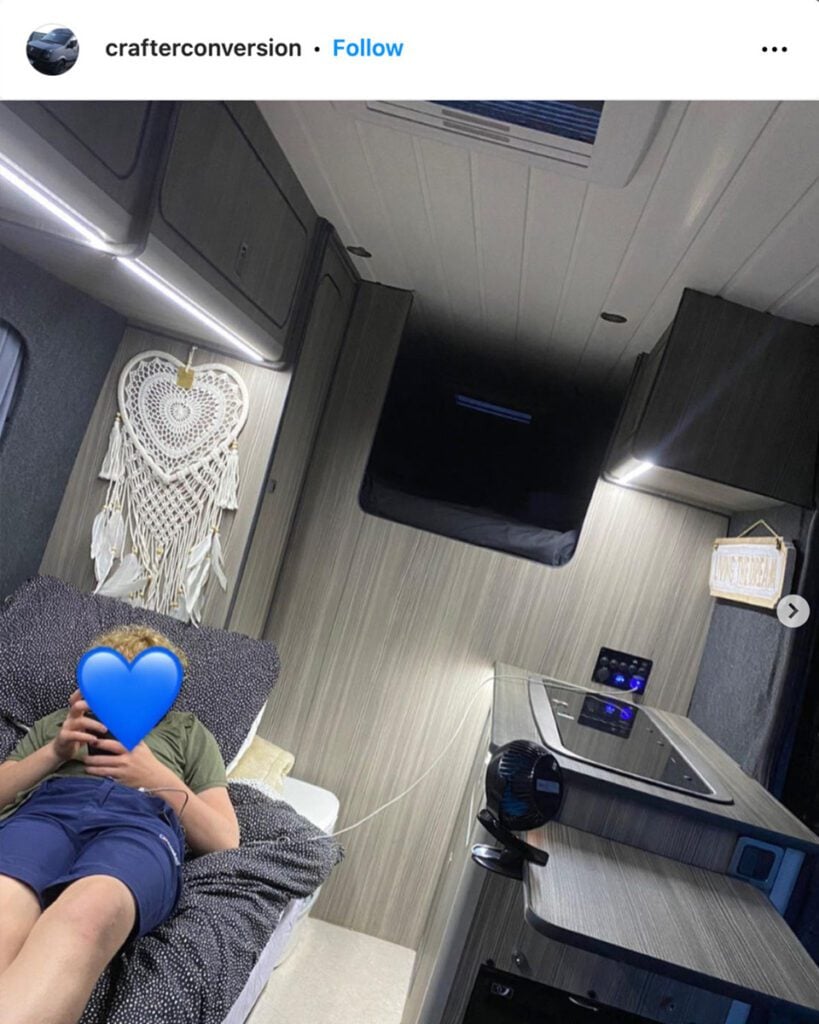
7. Fiat Ducato
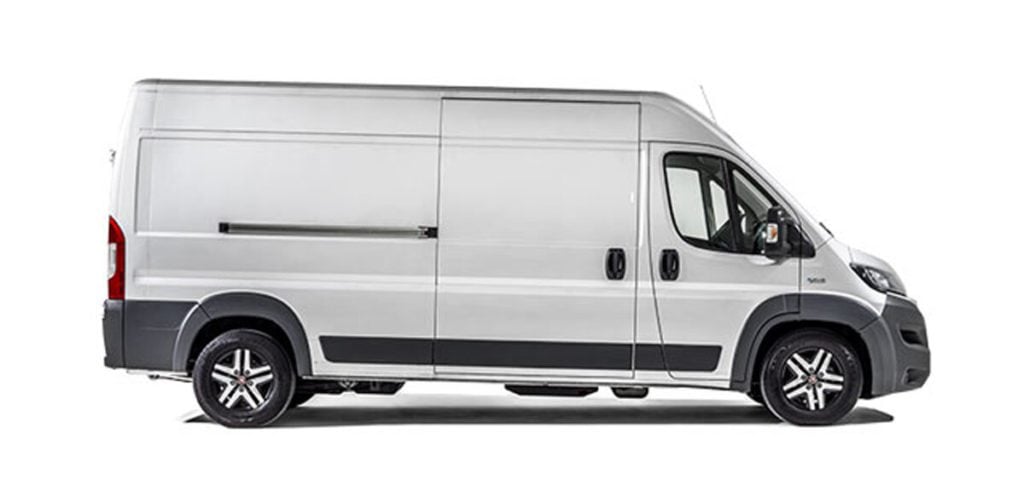
Tall enough to stand in, but without an unusually large footprint, the Fiat Ducato offers many options to find the exact right size for your needs. They even offer a special “motorhome base” that includes a wider rear track, special tires, a lower chassis and portals for water tank installation.
It’s no wonder that it’s one of the most popular vans for campervan conversion in Europe.
Available lengths:
- Standard: 3000mm (118.1 inches) wheelbase, 4963mm (195.4 inches) long
- Medium: 3450mm (135.8 inches) wheelbase, 5413mm (213 inches) long
- Long: 4035mm (158.9 inches) wheelbase, 5998mm (236 inches) long
- Extended: 4035mm (158.9 inches) wheelbase, 6363mm (250.5 inches) long
Roof heights:
- Low: Maximum height from floor to ceiling: 1662mm (65.4 inches)
- Medium: Maximum height from floor to ceiling: 1932mm (76 inches)
- High: Maximum height from floor to ceiling: 2172mm (85.5 inches)
Pros:
- Comes in a 4WD option
- Offers a motorhome specific base when ordering direct from the factory
- A large service network throughout Europe
- A tighter turning radius than similar commercial vehicles
Cons:
- Not available in North America
- Finding vehicle services outside of Europe may be challenging
Examples of Fiat Ducato conversions
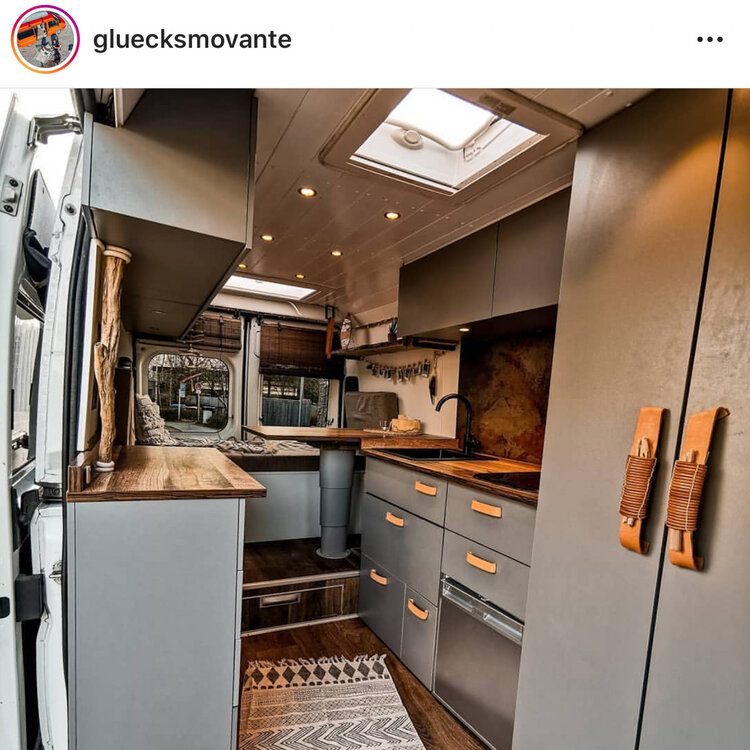
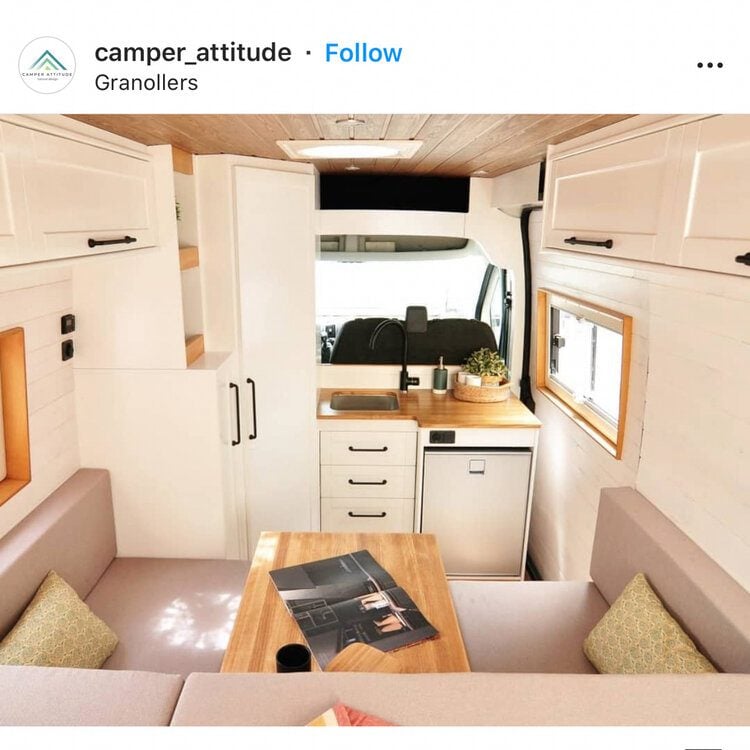
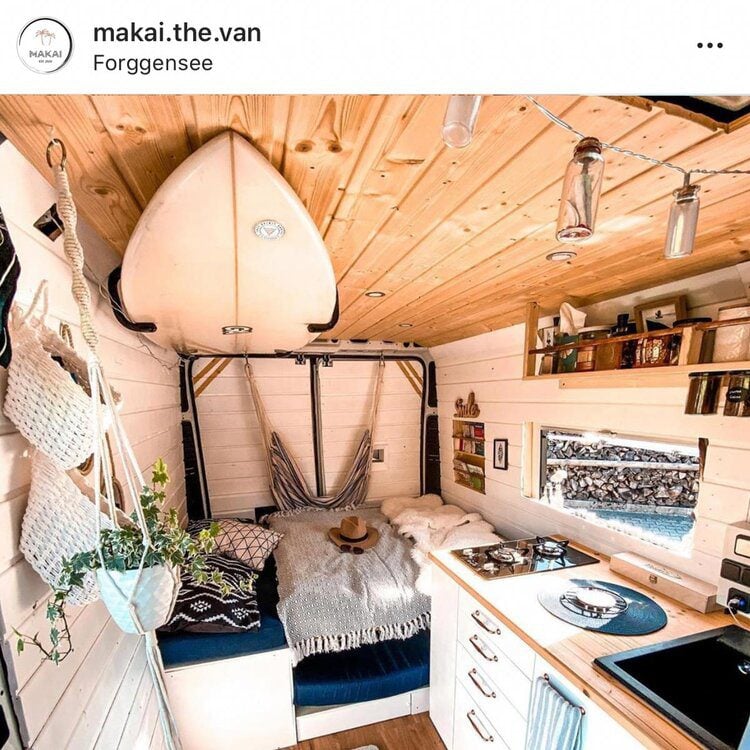
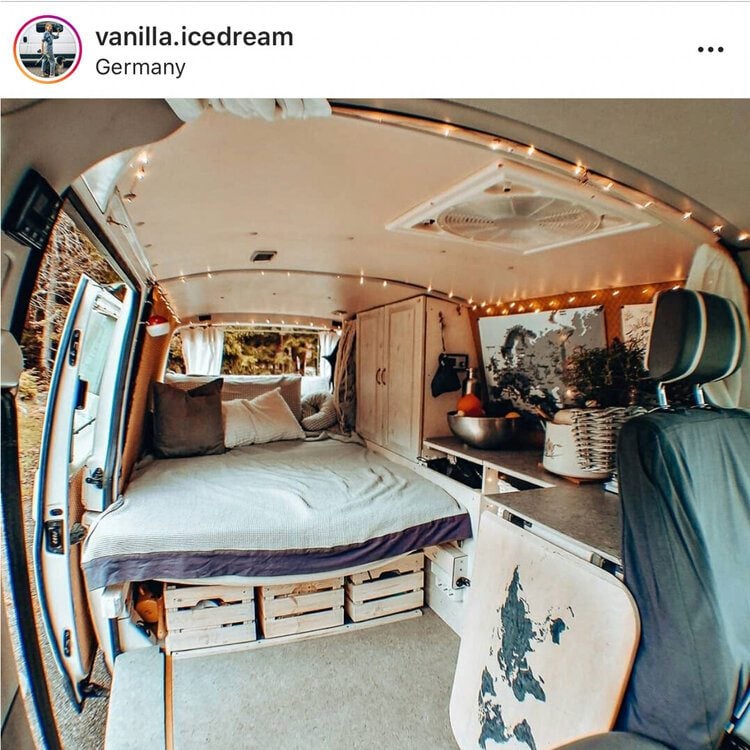
8. Toyota Hiace
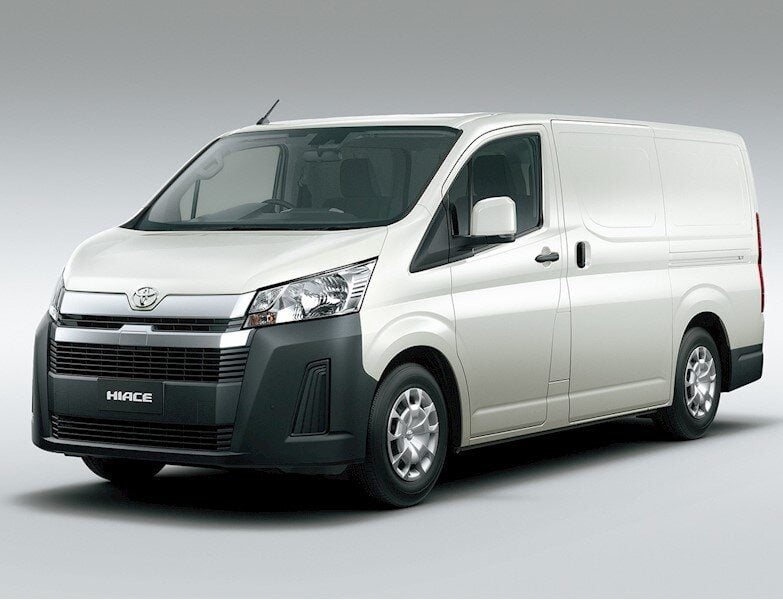
This one’s for our friends down under!
The Toyota Hiace is a popular van for camper conversion in Australia and New Zealand. The Japanese automaker is known for high standards and reliability making this an excellent choice for long-haul trips and extended use.
The highly anticipated sixth generation Hiace was released in 2019 and came with a lot of changes; a new semi-bonneted design, new chassis, new engines, passenger-car safety, and a host of new technology.
Available lengths:
- Long: 3210mm (126.4 inches) wheelbase, 5265mm (207.3 inches) long
- Super Long: 3860mm (152 inches) wheelbase, 5915mm (232.9 inches) long
Roof heights:
- Standard: Maximum height from floor to ceiling: 1989mm (78.3 inches)
- High: Maximum height from floor to ceiling: 2281mm (89.8 inches)
Pros:
- The sixth-generation comes with a major boost in safety ratings receiving a full 5 starts from ANCAP safety review
- The new semi-bonneted design allows for greater driver/passenger comfort
Cons:
- These vehicles are rear wheel drive, which can be difficult in some driving conditions
- Older generations (1-5) have a cab-over-engine design which is less aerodynamic and harder to perform maintenance
Examples of Toyota Hiace conversions
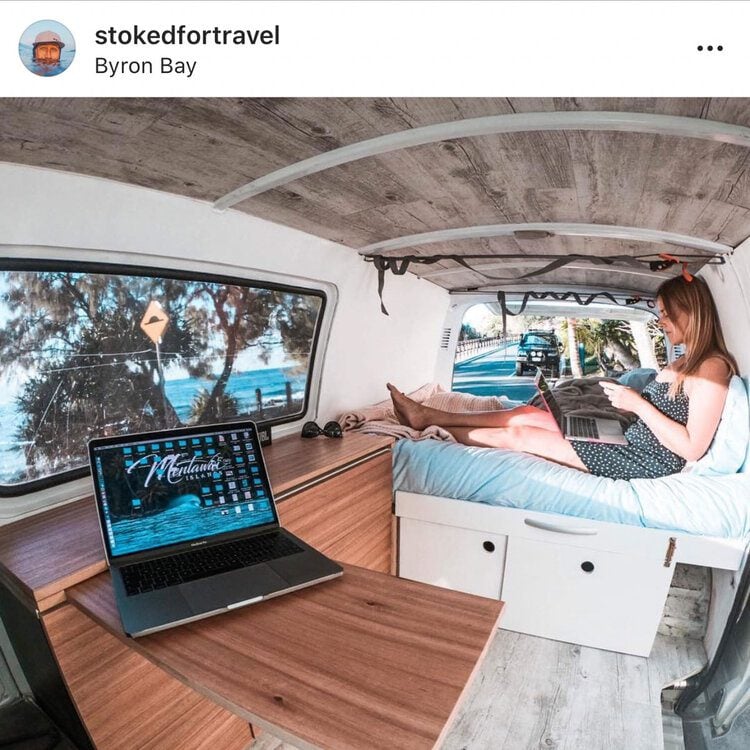
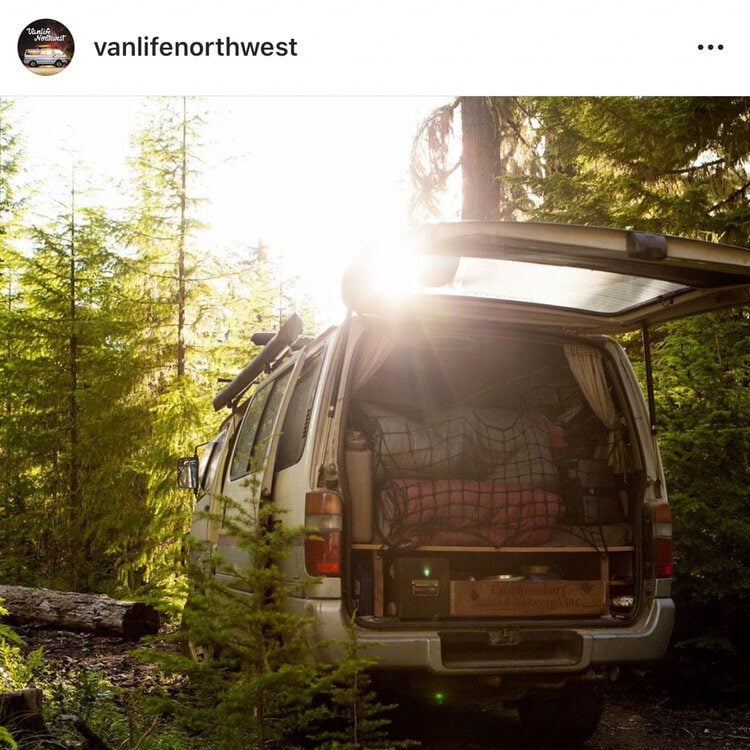
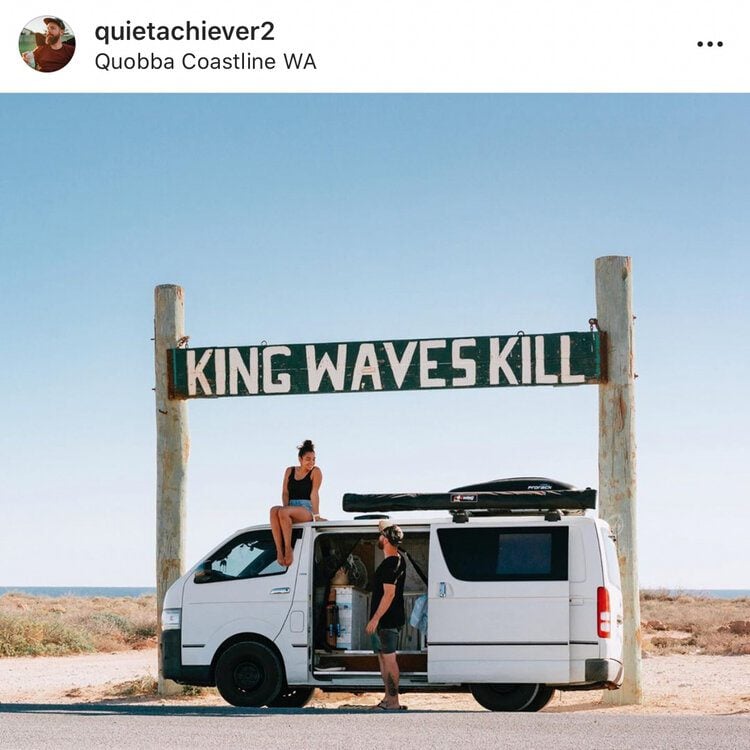
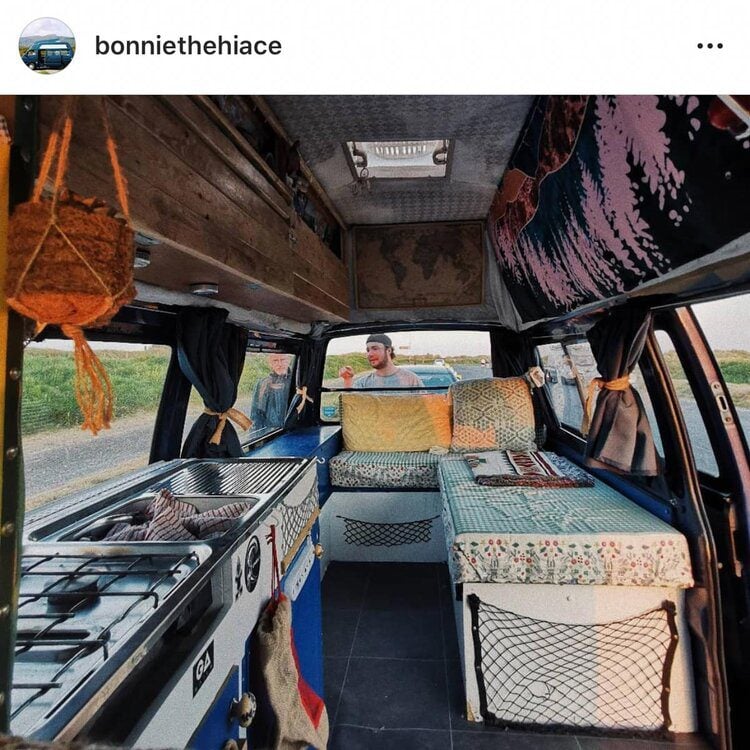
Alternative to the Toyota Hiace: Nissan Vanette
The Nissan Vanette is pretty similar in many ways to the Hiace, and is another good option for a conversion if they are available in your home country. We rented this model van in New Zealand, and it was perfect for a small and simple conversion.
9. Chevy G20
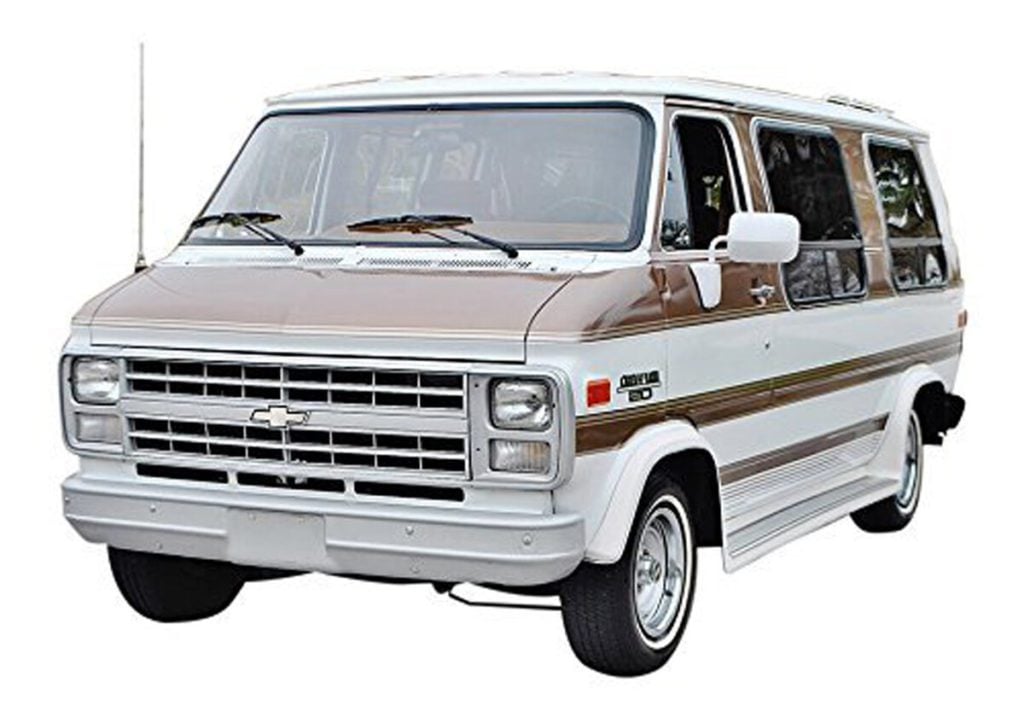
If you’re going for a super low-budget build, or just like the idea of driving something that looks more like a personal vehicle than a tiny home, the Chevy G20 is a great option.
Manufactured up until 1996 (when it was replaced by the Chevy Express model) these passenger vans have a low cost of upkeep and plenty of after market parts available, making them an easy choice for van life.
Most G20s have low roofs (inside which you won’t be able to fully stand up), but you can install a high top roof on your own or you can search for G20s that already have this feature (which may cost a bit more).
Our personal experience: We purchased a Chevy G20 for our first campervan build back in 2017 and we were incredible happy with it. Our conversion was cute, comfortable and functional, but not exactly what you’d call luxurious.
Available lengths:
- Standard: 110-inch wheelbase, 132.9 inches long
- Long: 125-inch wheelbase, 173.6 inches long
- Extended: 146-inch wheelbase, 189.4 inches long
Roof heights:
- Standard: Maximum height from floor to ceiling: 47.9 inches
Pros
- Low initial investment for ownership
- Good for a low-budget DIY build
- Drives more like a personal vehicle than a commercial vehicle
- Low cost of upkeep and maintenance
- V6, V8 and diesel engines available
- RWD (rear wheel drive) and 4WD options available
Cons
- Old models may have high milage and/or need lots of repairs
- Not much head room (unless you add or purchase a high top roof)
- Needs to be completely gutted for a custom build
Cost to buy: The price is going to vary significantly based on the year, condition and mileage. To give you a benchmark, ours was a 1994 and we bought it for just $2,000 (in 2017) and it had just under 80,000 miles. It had a few engine issues and in need of tires, but overall it was a pretty good deal.
Similar alternatives to Chevy G20:
- GMC Astrovan
- Ford Ecoline
Examples of Chevy G20 conversions
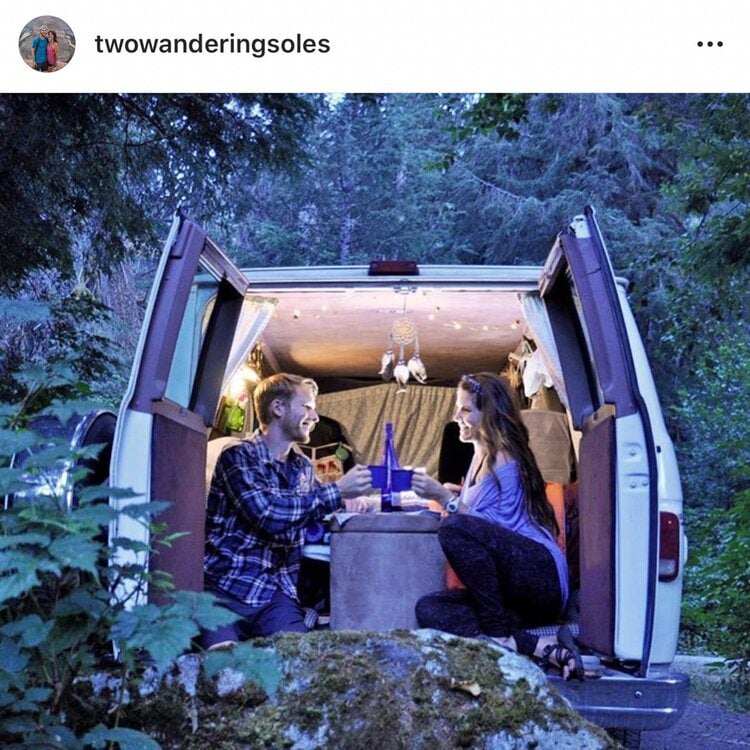
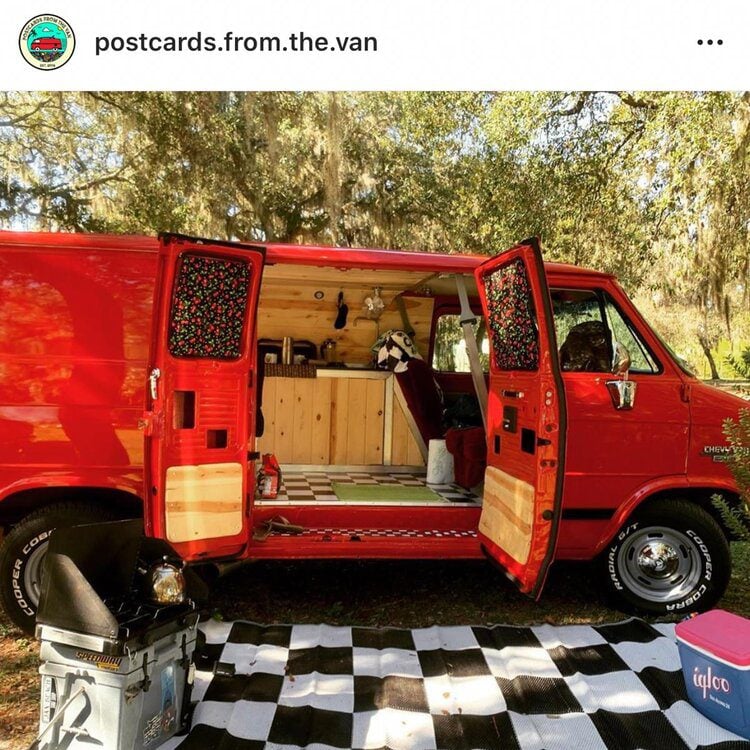
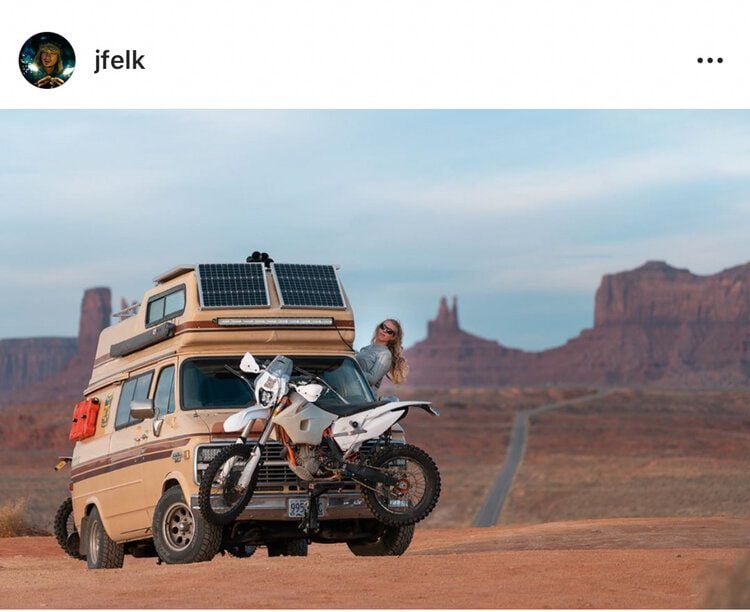
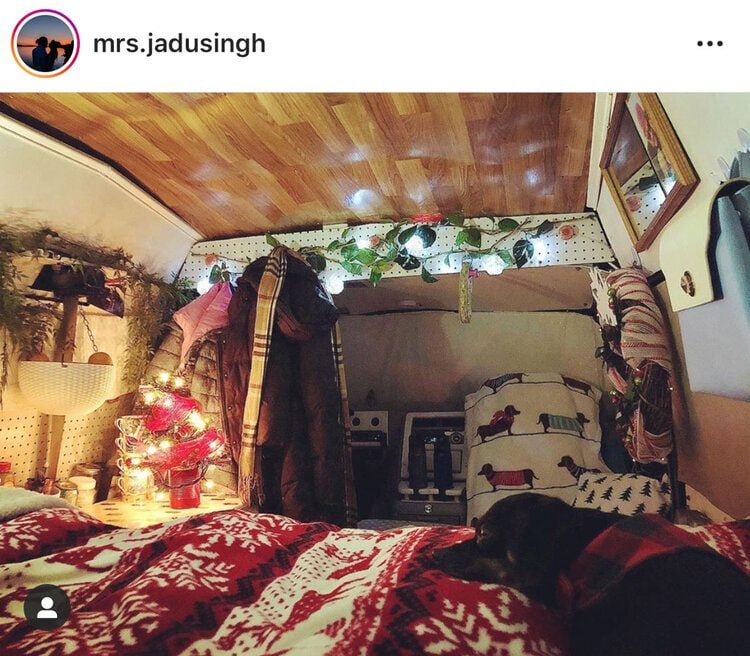
10. Ford Econoline
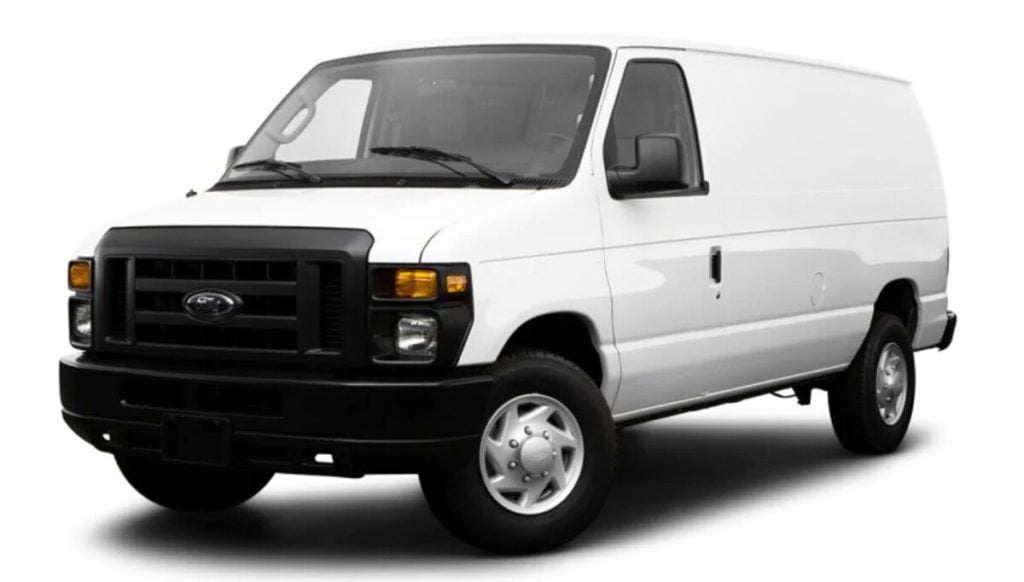
With models dating back to the early 60’s, the Ford Econoline (also known as the Ford E-Series) vans are another popular van for conversion into campervans. This model line was replaced by the Ford Transit models in 2015, so if you are looking for a more affordable, slightly older model than the Transit, the Econoline is your go-to.
One of the reasons they make such good campervans is their widespread availability throughout North America and the ease in finding space parts. The fourth generation, produced from 1992 – 2015, is going to be the one most commonly seen on the road today.
Available lengths:
- Standard: 138-inch wheelbase, 216.7 inches long
- Extended: 138-inch wheelbase, 236.7 inches long
Roof heights:
- Cargo Van Exterior Height: 82.4 inches, interior height at 55.3 Inches
- Passenger Van Exterior Height: 82.1 inches, interior height at 51.9 inches
Pros
- Widespread availability of affordable used models
- Plenty of affordable spare parts available
- Known to last as long as 250,000-300,000 miles with proper maintenance
Cons
- They make only one wheelbase length
- No high-top models
- They will likely have high mileage as they’ve been out of production for a number of years
Cost to buy: There are plenty of models available under $15,000, and some under $10,000.
Examples of Ford Econoline conversions
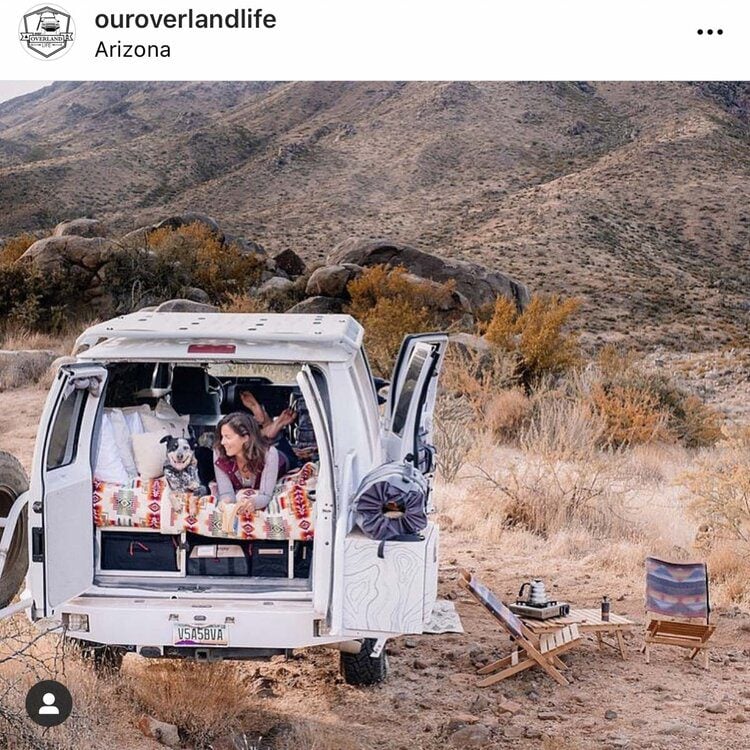
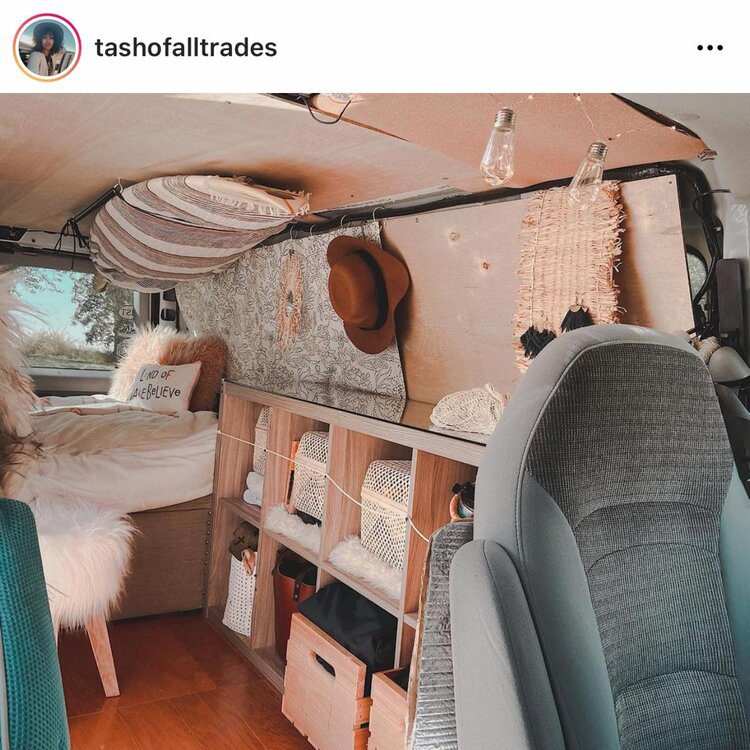
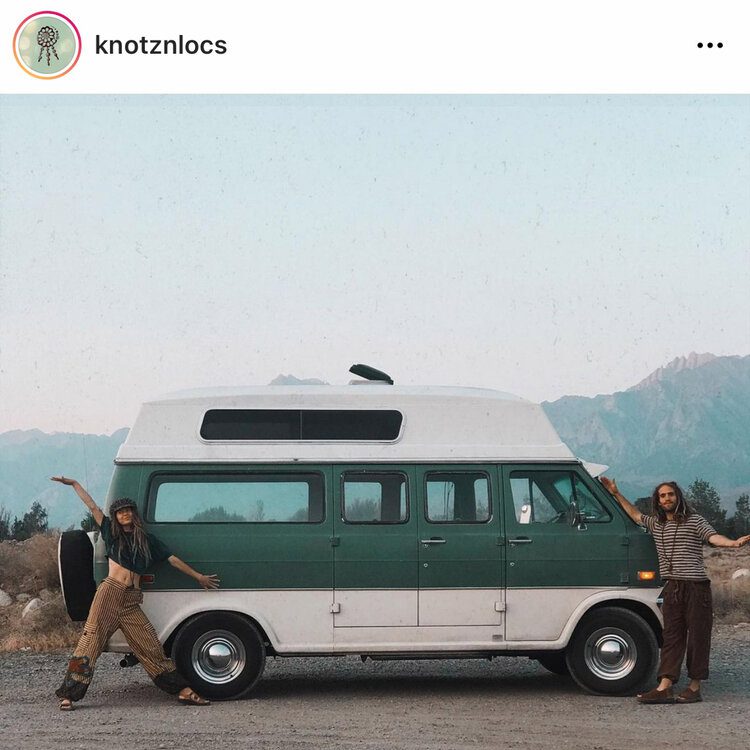
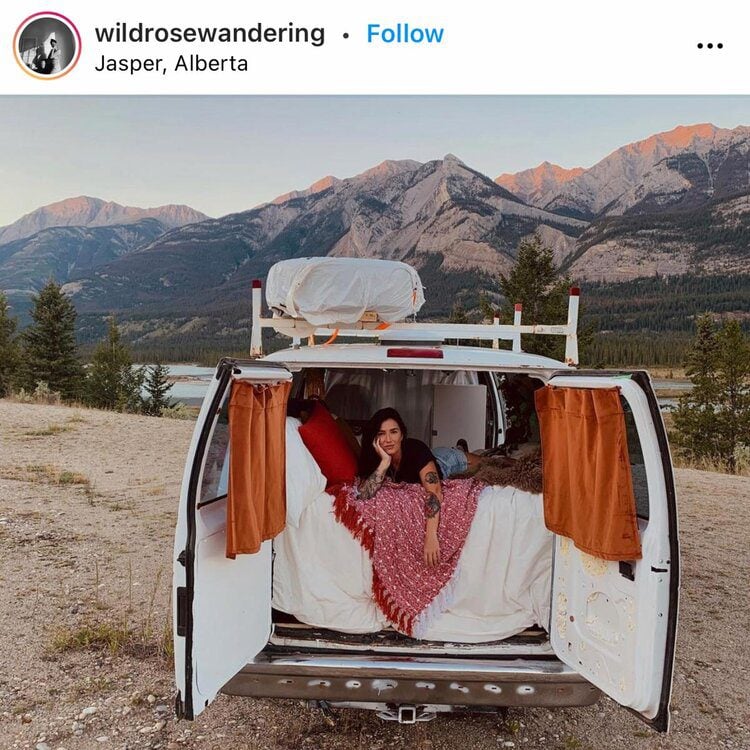
DIY campervan conversion guide
Simplify your van build & get on the road faster!
Want to save yourself the headaches and hours of research we went through and get straight to the building process?
We created Van Conversion Academy, a DIY campervan conversion guide, because it’s exactly what we wished we’d had when we were building our campervans.
Save yourself the time and money and get straight to the building process with step-by-step instructions, video tutorials, blueprints you can actually copy and tons of insider tips and recommended products to get you on the road faster!
Click below to learn more about Van Conversion Academy.
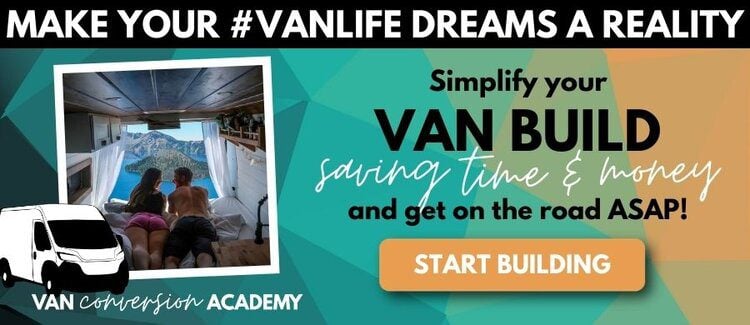
Are you thinking about living the campervan life?
We have TONS of resources on converting your own campervan and living the #vanlife. Check out our Ultimate Guide to Van Life for all the answers to your most burning questions, or read some of our favorite articles below.
- How Much Does a Campervan Cost: Budget to Luxury Van Builds
- Living in a Van: The BEST Parts of Vanlife
- WORST Parts of Vanlife: The Stuff Nobody Talks About!
- DIY Campervan Conversion on a Tiny Budget in Less Than 1 Week
Interested in engaging with others about all things #vanlife? Join our Vanlife Facebook community!
Don’t forget to grab your FREE Vanlife Jumpstart Toolkit!
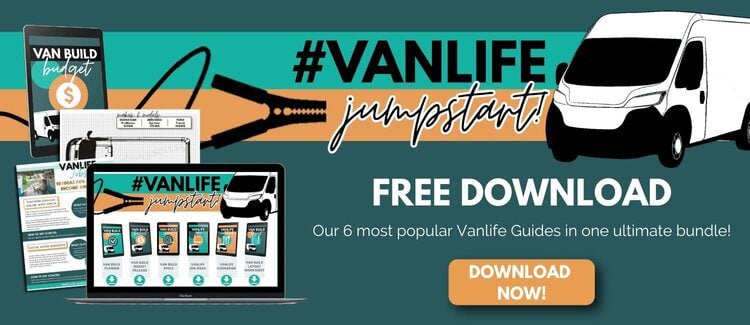
Save this article on Pinterest for later!
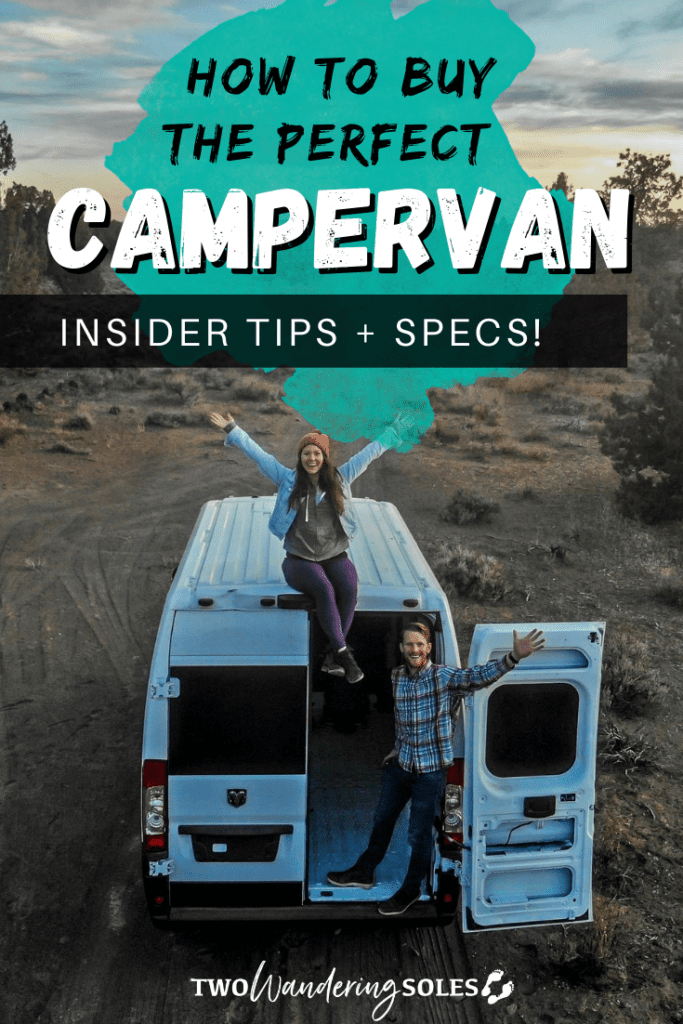

We want to hear from you!
After reading through this article, which do YOU think is the best van for a camper conversion? Are you interested in converting your own campervan and have more questions? Comment below and we’ll do our best to get back to you!

Wow! This article is a goldmine of information for anyone considering a camper van conversion. From detailed insights into different van models to practical tips on layout and design, it’s clear that a lot of thought and research went into this guide. Thank you for sharing your expertise and inspiring others to embark on their own van life adventures!
Your information is very helpful to me, I am wondering which car is the best fit for our needs. Thank you for writing this.
I chose one that suits our needs. Your information is very helpful, keep doing this work.
Can’t thank you guys enough for this article! It is by far the most thorough and informative one that I have read (or watched) on this subject and has helped me immensely in starting my decision process. I retire in < 2 years and plan to sell my townhouse and hit the road for at least a year or more! Cheers!
Hi guys! Good article overall, thanks!
Just wanted to make a few corrections:
The Ram Promaster is a rebadged Fiat Ducato van. Fiat owns Ram, Dodge and Chrysler.
The Chevy G20 van never came from the factory in 4WD. Neither did the Ford Econoline. Several companies have made 4×4 conversions for those vans for decades, including Quigley and Sportsmobile.
The Chevy Astro van is a minivan and is much smaller inside and out than the full size Chevy G10, G20 and G30 vans.
For the VW Vanagon, only one specific model got 4X4 – the Syncro. And it was a rare and expensive option – even today clean used Vanagon Syncros are hard to find and very pricey compared to a similarly equipped RWD Vanagon. The vast majority of Vanagons are RWD. None of the VW buses sold in America were 4X4 from the factory and AFAIK nobody ever successfully converted them to 4X4 commercially either.
(I’m a professional mechanic who started at a Chevy dealer back in 1993 when the G20 was still new and has owned Astro vans, 1960s VW vans, and has worked on a lot of campers, Sportsmobile 4×4 Ford E350 conversions, and run Sprinters as shop vans too)
Thank you for sharing your wisdom!! This was very helpful. Do you have any advice on insurance that you could impart? Anything we need to be aware of or recommend to have?
Very useful, thank you. Loved knowing that you’ve done it twice yourselves! Congrats btw.
I think vans are too small for fulltime living, I’m saving for a Toyota Coaster, considerably bigger than a Hiace, lots of them in the southern hemisphere and very reliable.
This is a really useful article for trying to get the lay of the land. Thanks guys. Nice to see it up to date with the latest vans like the Transit with AWD. I would also add if you’re in the USA Vancamper is a good place for used campervans. It’s free to list and they have apps for iPhone and Android too. https://thevancamper.com
THANK YOU GUYS SO MUCH FOR THIS
You are very welcome, Matt!
Lots of good information. Will definitely be referring back when I am ready to purchase.
Great information, thank you! I love all the details and pics of the different vans and builds. I will definitely be referring back to this.?
It’s a nice post but I don’t think people read blogs anymore
Hi Marie, thanks for sharing your opinion. I do have to ask, how did you find our blog, read all the way to the end, and leave a comment?
I read blogs. This one was excellent.
I read blogs and this one is EXCELLENT!!!